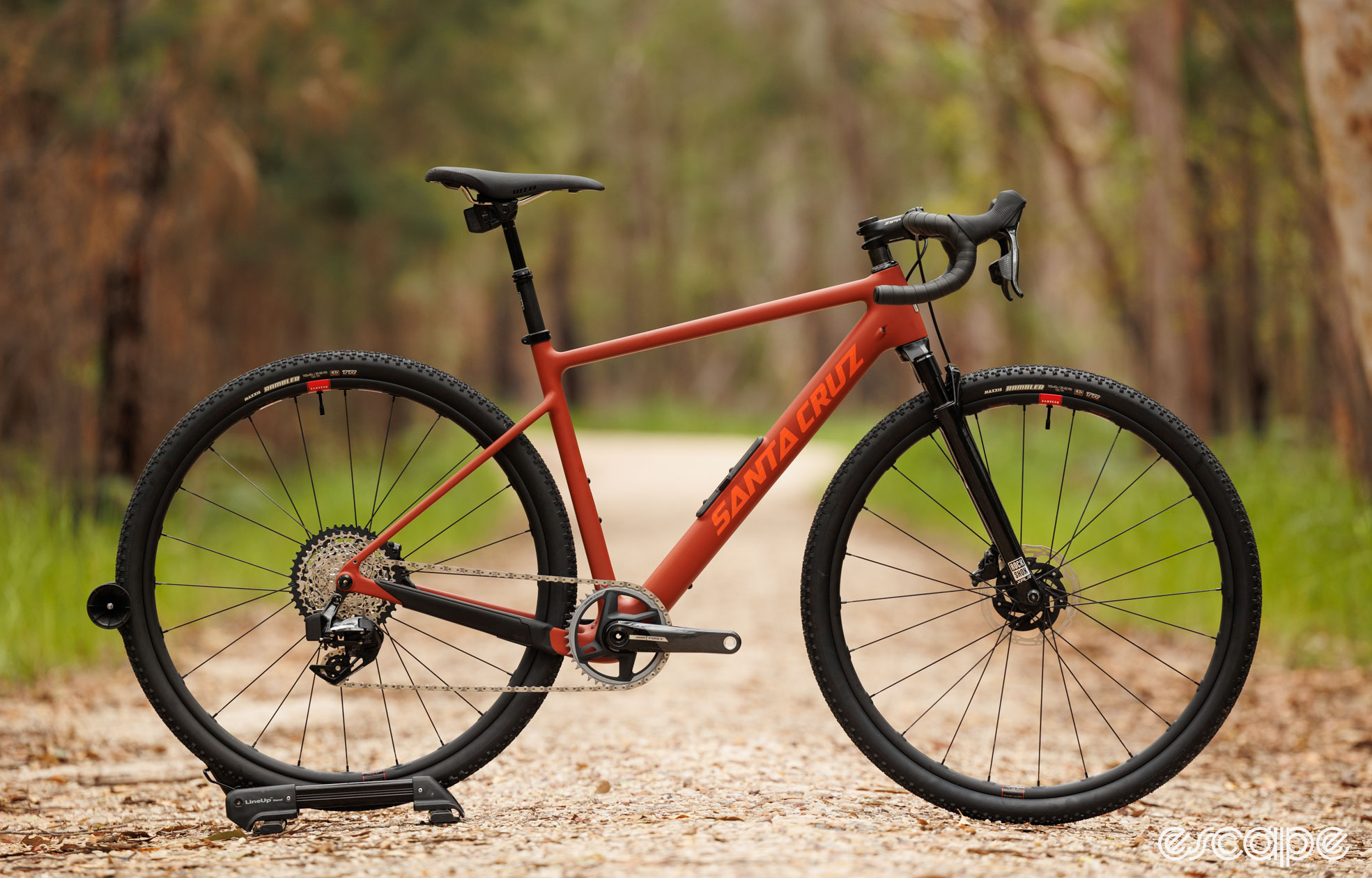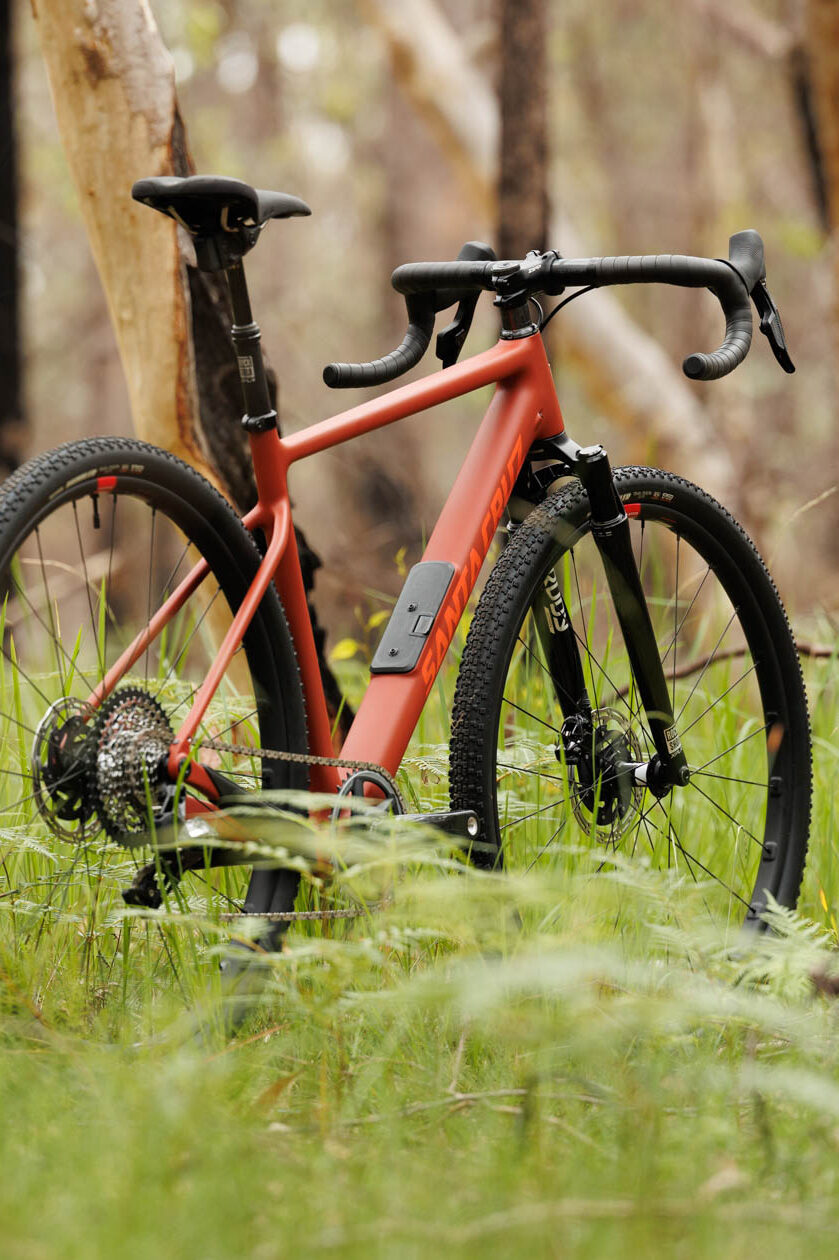Santa Cruz Bicycles is undoubtedly known as a mountain bike brand but the company has dabbled in the drop-bar world for almost two decades. Now in its fourth generation, Santa Cruz’s Stigmata started life during the United States’ cyclocross boom and was present when the gravel segment was yet to become a thing.
I helped to review the third-generation Santa Cruz Stigmata at my previous place of employment and I accused it of being a little vanilla. As a sporty-handling almost road-going gravel bike it certainly rode well, but it was a lot of money for a bike that arguably could have had any name on its down tube. It certainly didn’t feel like something to carry the name of a specialist mountain bike brand.
A year ago the fourth generation Stigmata came to be, and by contrast, it was all too clearly a Santa Cruz. Similar to a few other gravel bikes from other mountain bike names, it introduced suspension-corrected geometry, lengthened frame reaches for use with a short 70 mm stem, offered a storage hatch in the down tube, and a Universal Derailleur Hanger (UDH) out back. It also went the opposite direction to most new bike marketing, offering increased weight, less stiffness, flappy cables outside of the headset, and not a single claim of aero-watt savings.
I’ve been testing this new model for a few months longer than I needed to, including with a RockShox Rudy suspension fork and the Stigmata rigid fork. It’s now by no means vanilla, and in many ways, it’s a showcase of the features and ride quality that I think most riders should be thinking about in a gravel bike today. Or to ruin a good ending, I think this may just be my new benchmark gravel bike for the type of mixed off-road rides and simplified bike ownership I seek.
The short of it: An example of where I see more off-road-centric gravel bikes headed and I want one.
Good stuff: Dialled ride quality, wonderful build construction, progressive geometry that encourages silly terrain, modern tyre clearance, welcoming reach and stack figures, not a single dumb feature that means easy ownership, doesn’t feel fragile.
Bad stuff: Off-road-centric geometry, limited mounting points, average weight, and a premium price tag make this the ideal bike for a more limited group. A mud-collecting shelf behind the bottom bracket. The 10-44T XPLR gearing feels too limited for a bike as capable off-road as this (old spec tested). Bushing sizing issues in XPLR AXS dropper post.
Pricing: Frameset is US$2,700 / AU$4,500. Complete bikes from US$4,000 / AU$6,000. US$7,700 / AU$11,000 as tested.
A refresher on the Stigmata
The Gen-4 Stigmata is quite the departure from the Stigmatas before it and nothing tells that story quite as effectively as the now-progressive geometry.
Across the six frame sizes, the reach figures have grown by a whopping 30 mm and are optimised for use with a short 70 mm stem length. Head tube angles are slackened by a whole 2 º to hit a consistent 69.5 ° (producing a long 87 mm trail figure). Together, these design decisions place the front wheel further out in front for stability and to remove concerns over toe overlap. It’s worth noting that Santa Cruz isn’t breaking new ground with these numbers, and rather they feel closely inspired by the original BMC URS (another off-road-centric gravel bike I rated highly back at the Old Place).
| XS | S | M | L | XL | XXL | |
| Reach | 375 | 390 | 405 | 420 | 435 | 450 |
| Stack | 550 | 564 | 576 | 600 | 612 | 631 |
| Head Tube Angle | 69.5° | 69.5° | 69.5° | 69.5° | 69.5° | 69.5° |
| Seat Tube Length | 450 | 455 | 485 | 515 | 545 | 575 |
| Front Center | 605 | 625 | 645 | 668 | 688 | 710 |
| BB Drop | 78 | 78 | 76 | 76 | 74 | 74 |
| Wheelbase | 1023 | 1043 | 1063 | 1087 | 1108 | 1130 |
| Rear Center | 423 | 423 | 423 | 423 | 423 | 423 |
| Head Tube Length | 90 | 105 | 120 | 145 | 160 | 180 |
| Top Tube Length | 533 | 552 | 570 | 592 | 610 | 631 |
| Seat Tube Angle | 74° | 74° | 74° | 74° | 74° | 74° |
Similarly, tyre sizes in gravel continue to grow, with the recent Unbound 200 seeing riders fitting the maximum tyre their bikes could handle. Here, the Stigmata’s geometry is optimised around the use of a 700 x 45 mm tyre and as a result, says farewell to official compatability with smaller 650B wheels (a decision I’m happy with).
That 45 mm tyre is the maximum size if you choose to use 2x shifting (up to 50/36T gearing), but ditching the front derailleur for 1x shifting opens the clearance up to 700 x 50 mm all while keeping a traditional-looking frame (no assymetrically dropped stays here). Of course, you can also go narrower than a 45 mm tyre, but expect the handling to quicken and the bottom bracket to be equally closer to terra firma.
Santa Cruz has also optimised the geometry to be suspension-corrected, meaning the numbers are based on using a 40 mm suspension gravel fork or Santa Cruz’s own Stigmata rigid fork. Both options feature a 45 mm offset, and the rigid fork’s 430 mm axle to crown height is effectively identical to the 40 mm RockShox XPLR fork when set up with its intended 5 mm of spring sag.
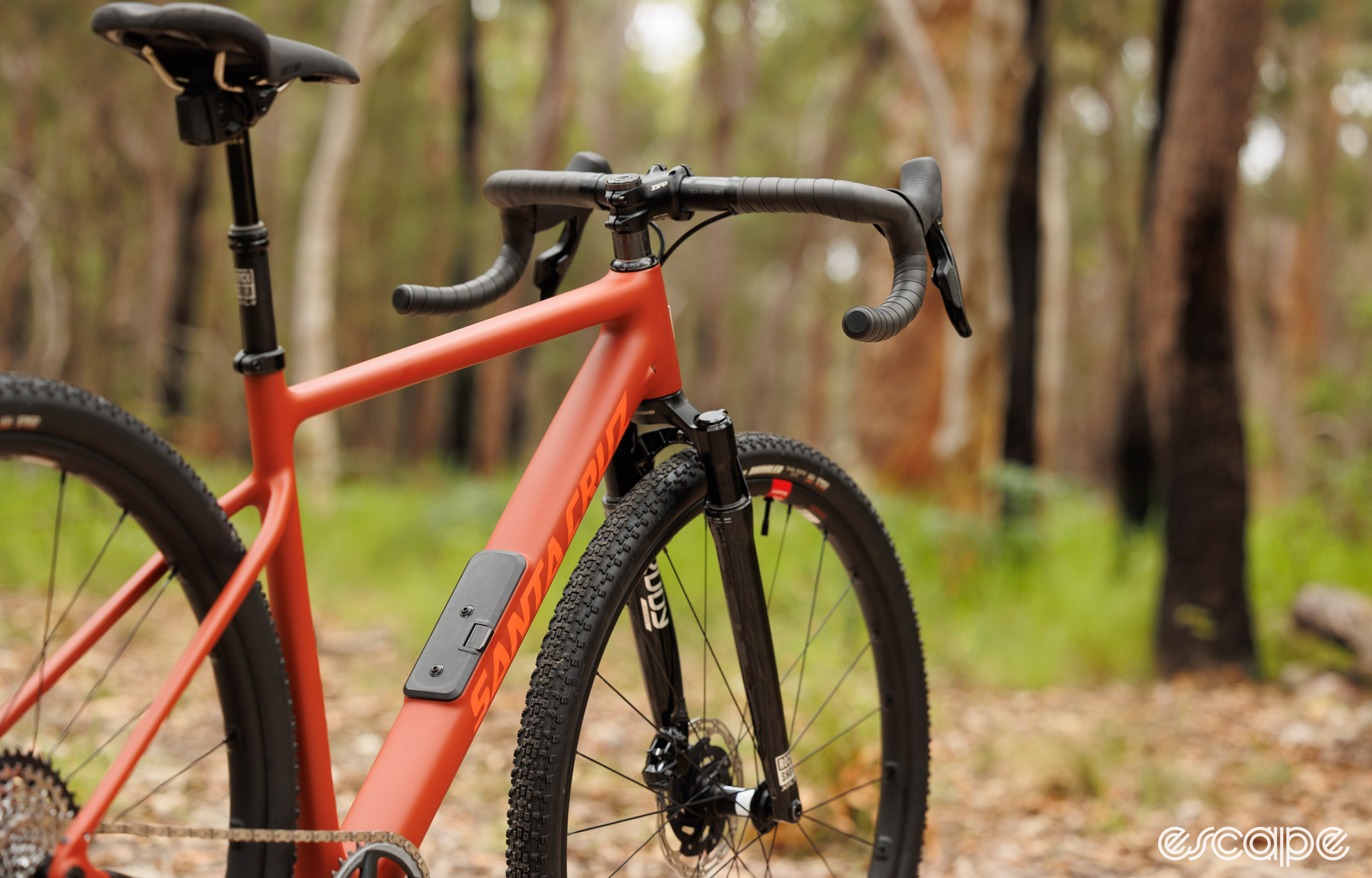
Today, Santa Cruz Bicycles is under the PON conglomerate of brands alongside Cervelo, Cannondale, Focus, and GT. I mention this as, due to its long front-centre geometry, the Stigmata is a non-UCI-approved gravel bike that clearly slants toward the off-road end of gravel cycling. Meanwhile, a bike like the newly updated Cervelo Aspero is one that offers a more road-like aesthetic, features, and geometry. In theory, a bike like the Cervelo Aspero is what I’d suggest to those looking to pin on a number, but this latest Stigmata has quite the race palmares (2023 elite men’s Unbound winner, to name one) thanks to Keegan Swenson – so that’s not so clear cut, either.
That PON brand portfolio means that Santa Cruz can pursue its own path in opposing features such as headset-routed cables, press-fit bottom brackets, and proprietary seatposts. As a result, the Stigmata is one of the more mechanic-friendly carbon gravel bikes on the market, and it does so with a well-regarded reputation for providing consistent quality backed by a lifetime warranty.
Anyone who does their own maintenance is likely to love the three internally sheathed cable ports beginning at the side of the head tube and therefore leaving the headset for the sole duty of supporting the fork. There’s a standard 68 mm English threaded bottom bracket. The seatpost is a regular 27.2 mm round number held by an external clamp. There’s nothing funky about the thru-axles, while the flat mount brake mounts are set up to natively accept 160 mm rotors, or can be equipped to handle 180 mm rotors. And lastly, the derailleur hanger is a UDH (Universal Derailleur Hanger), with Santa Cruz equipping a higher-quality aluminium hanger rather than the more typical composite material version.

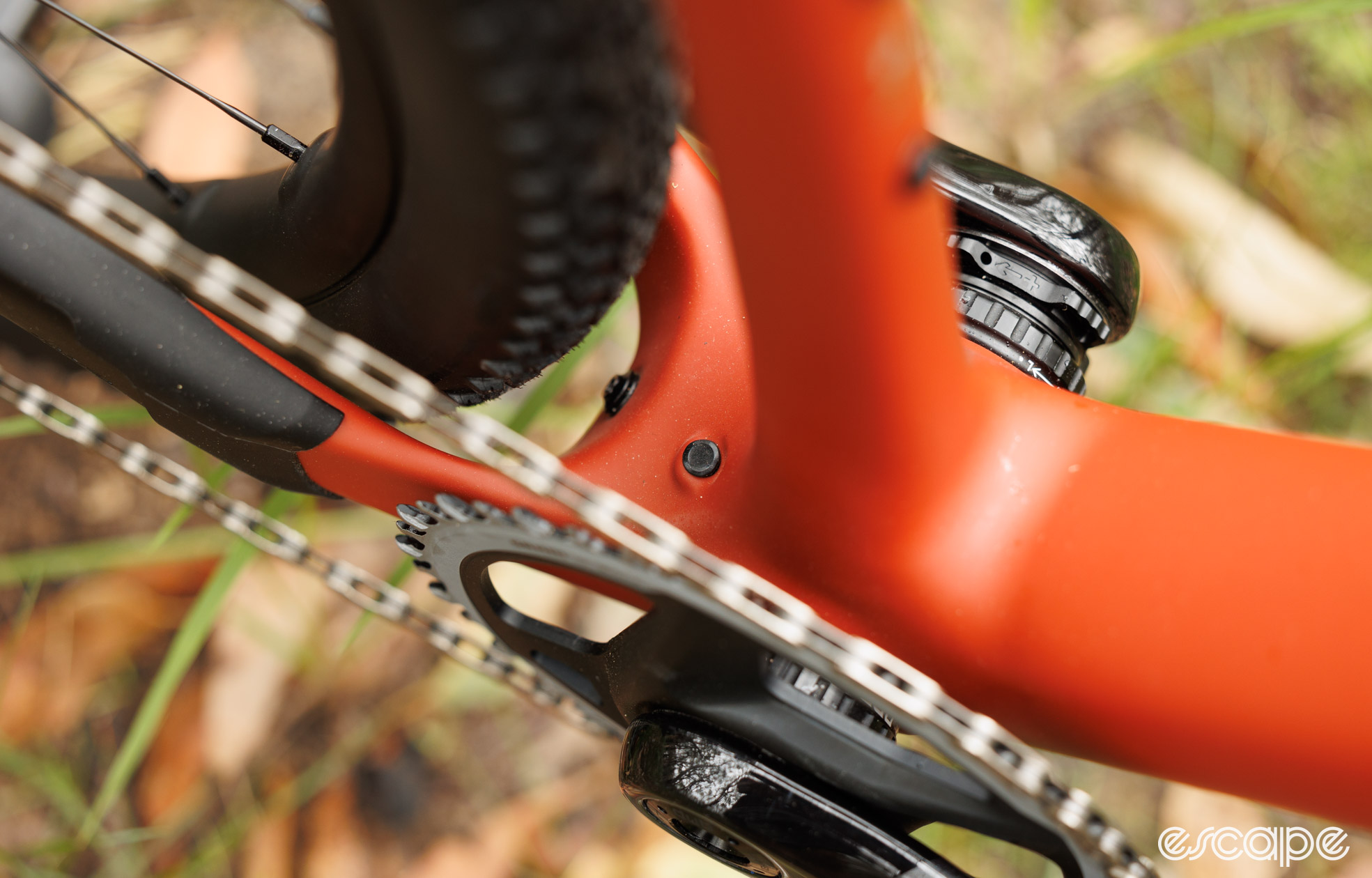
We’ve all seen a number of brands get a little carried away with inserts for mounting a plethora of bags but, by contrast, the Stigmata is kept minimalist and clean. According to the company this was driven partly by aesthetics but also due to the increased weight of having to reinforce the carbon layup for wherever those inserts are placed. There’s a third bottle mount beneath the down tube, and subtle fender mounts, but otherwise, your bags will need to be the strap-on rather than bolt-on variety. This may not please everyone, but as someone who only owns velcro-style bags, I have absolutely zero qualms about it.
However, there is some welcomed internal storage that comes with a weight trade-off. Like a number of popular mountain bikes, the Stigmata has a Glove Box, also known as a small storage hatch in the down tube. There’s a secure clip that gains you access to the decently well-sealed section, and from there you can stash whatever you can fit. Santa Cruz provides two high-quality neoprene wraps, one for an inner tube, and another for other commonly carried small items (e.g. multi-tool, pump, tyre plug, etc).
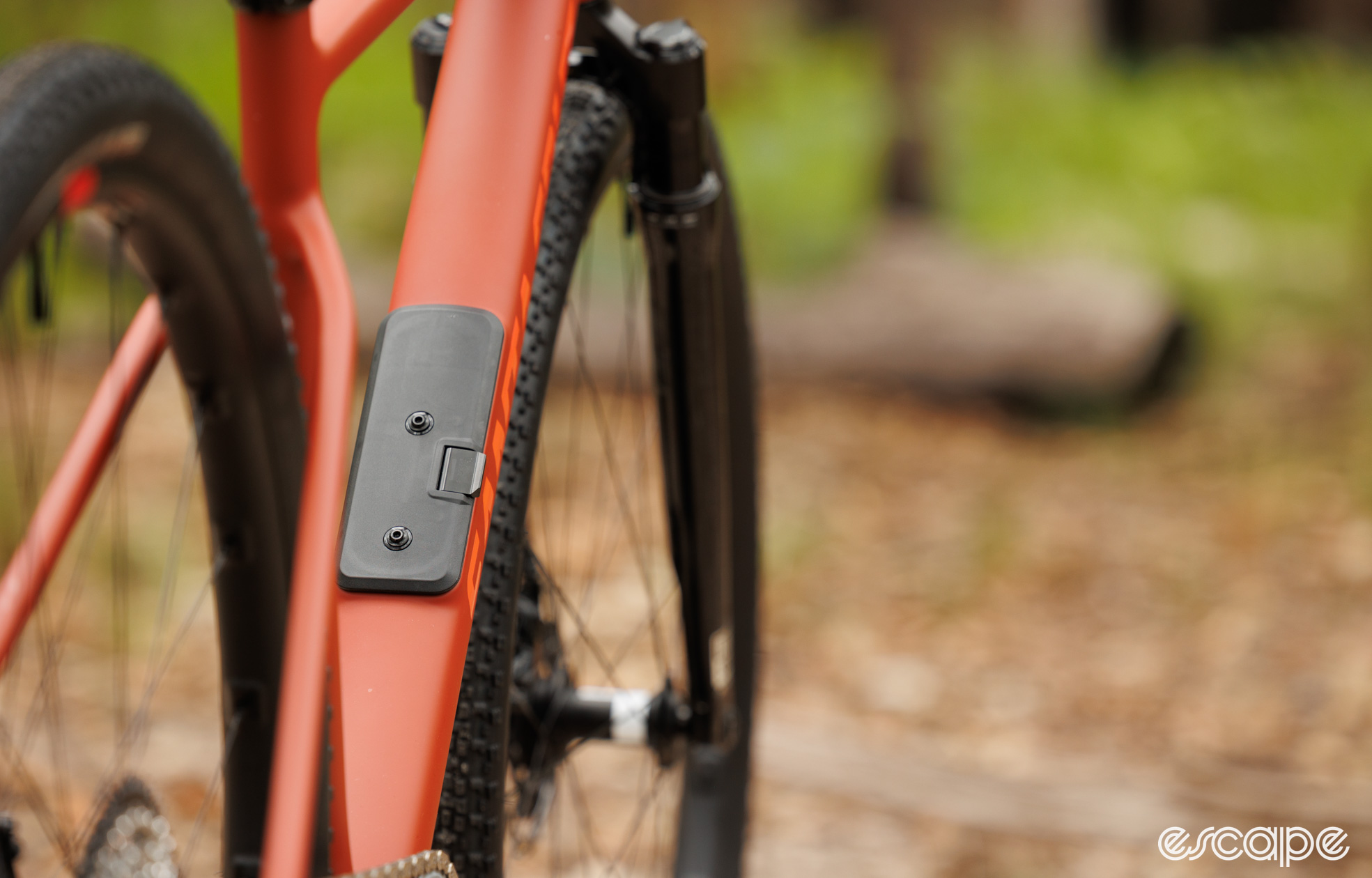
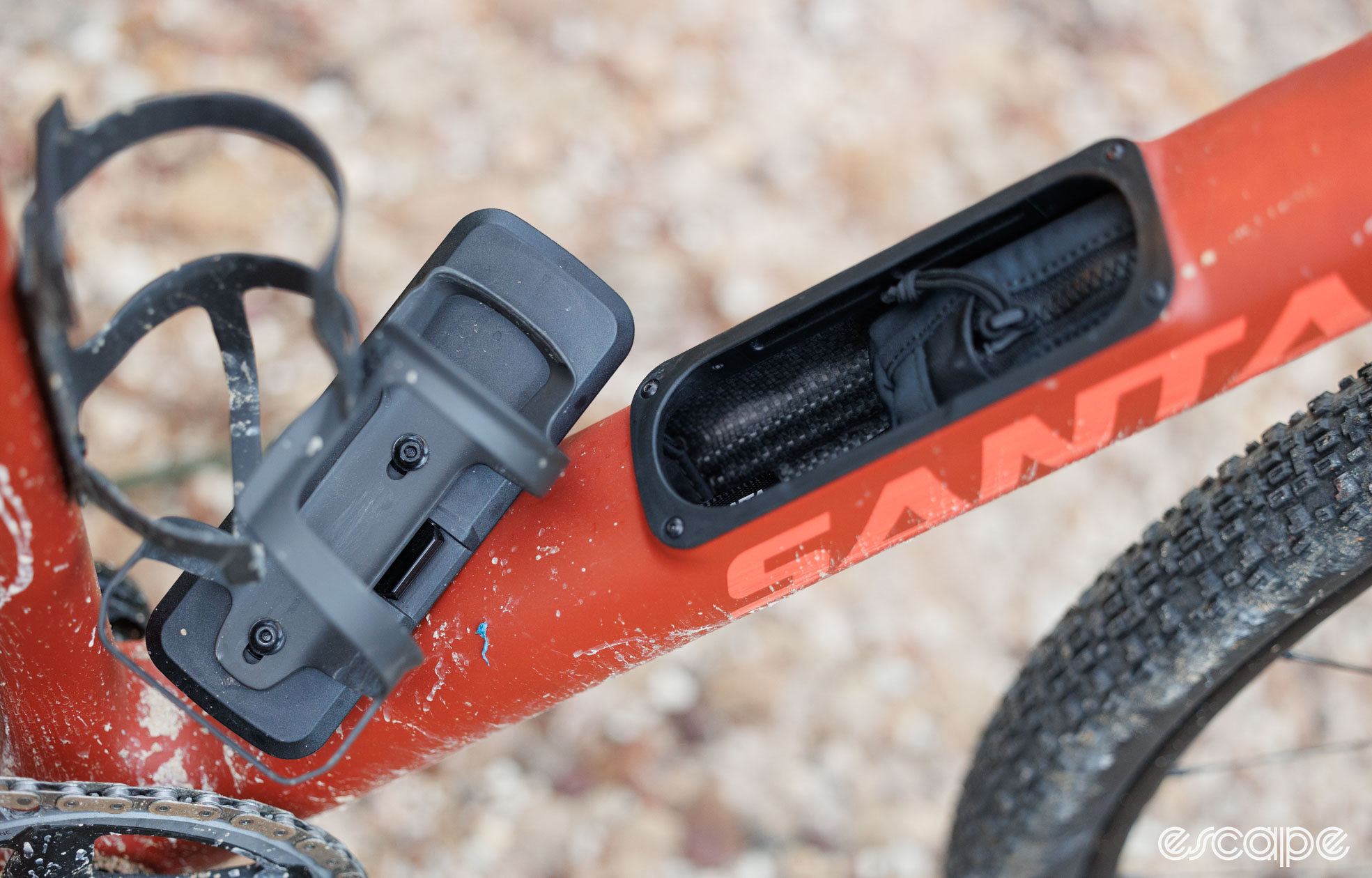
The longer mountain bike-inspired geometry and Glove Box have both added to the frame weight versus the previous generation of Stigmata. A Gen-3 56 cm Stigmata frame is quoted to weigh 1,260 grams, while a large-sized Gen-4 Stigmata adds a claimed 120 grams to that figure. It’s indeed not the sort of weight many would expect of a premium-priced carbon frame, however Santa Cruz as a company often seems to prioritise dependability over being the lightest option. As tested with the suspension fork, RockShox AXS dropper seatpost (heavy), and 700×45 mm tyres, my medium-sized sample weighed 9.41 kg (20.75 lb, without pedals). With a rigid fork, carbon seatpost, and a fancier build (that is still under embargo), that weight hovered at 8 kg (17.6 lb).
Pricing and options
Santa Cruz offers different levels of carbon fibre in some of its mountain bike models, but there’s just one “premium” CC-grade frame in the Stigmata. That one grade of frame is then offered in six sizes, three colours (two of which are new), and a bunch of recently updated build kits.
While it can vary from region to region, Santa Cruz now offers the Stigmata with SRAM 1x and a suspension fork, or with 2x gearing and the carbon rigid fork (excluding the base model which is 1x with a rigid fork). There’s also a frameset option (US$2,700 / AU$4,500). The bike I reviewed features the previous top-end Force 1x AXS RSV build kit, which has since been superseded by a new range of build kits.
Complete bikes with the rigid fork start from US$4,000 / AU$6,000, which gets you the new SRAM Apex Eagle 1×12 mechanical (10-50T cassette) along with a number of well-proven and brand-name components. Spending a touch more sees a rather significant jump in the build – for example, at US$4,999 / AU$7,700 you get a full SRAM Rival 2x AXS Wide groupset, a nice Easton ARC/DT Swiss 370 alloy wheelset, and a mix of Zipp, WTB, and Easton touchpoints (including a carbon fibre seatpost). Meanwhile, the most premium rigid-fork bike option, priced at US$7,000 / AU$10,500 features a SRAM Force 2x AXS Wide groupset (with the new and greatly improved Red AXS shifters), a Reserve 25|GR Carbon wheelset with DT Swiss 350 hubs, and the same mix of Zipp/Easton/WTB touchpoints.
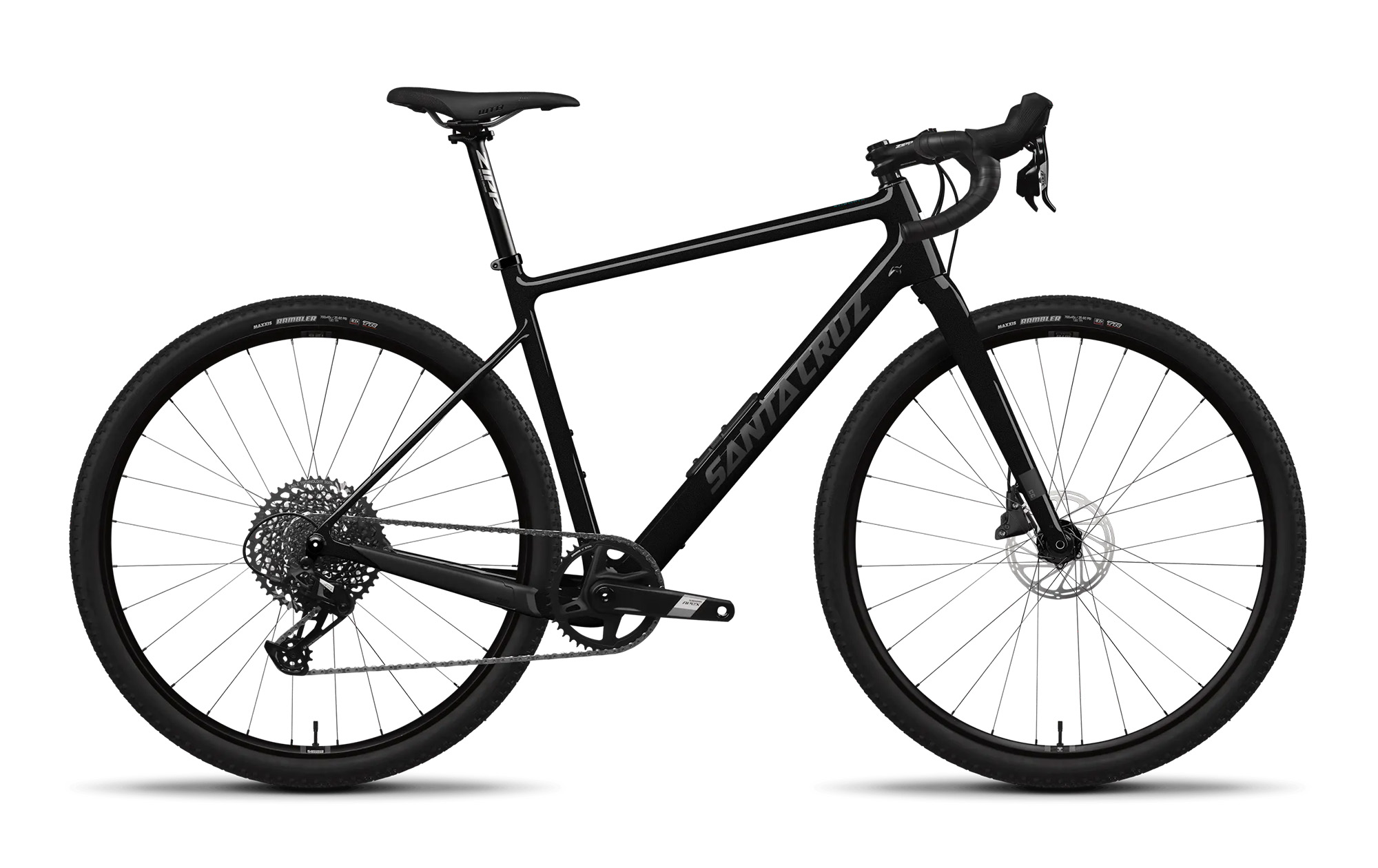
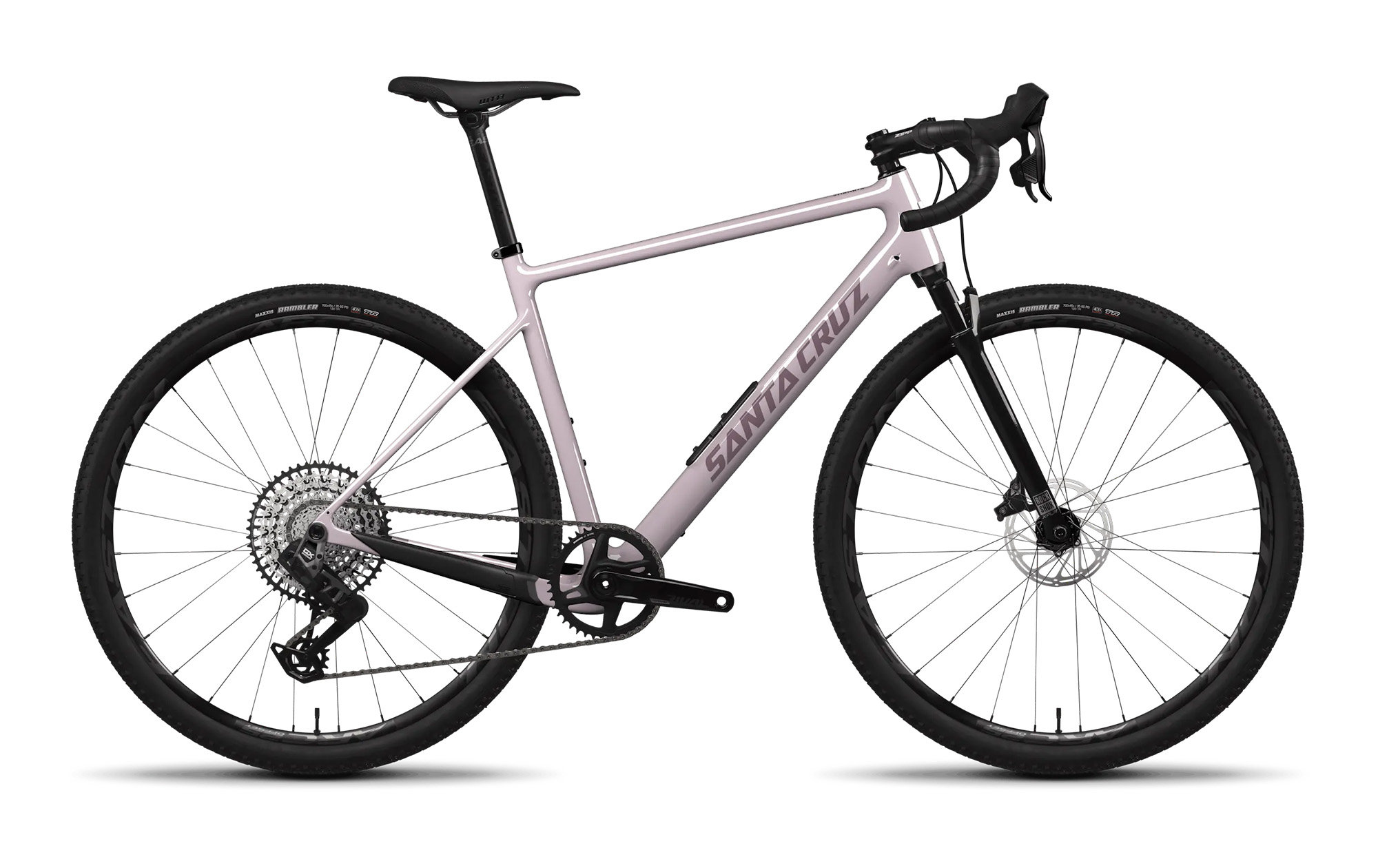
There are two complete bike options equipped with a Rockshox Rudy 40 mm suspension fork as stock. Starting at US$4,900 / AU$7,500, you’ll get a bike equipped with a RockShox Rudy Base XPLR suspension fork, a 1x SRAM Rival/GX Transmission Mullet AXS groupset (10-52T cassette), an Easton ARC/DT 370 alloy Swiss wheelset, and a mix of Zipp and Easton touchpoints. Meanwhile, the top-tier option (and the nearest replacement for the version I tested) is priced at US$7,700 / AU$11,500 and provides a RockShox Rudy Ultimate XPLR 40 mm fork; RockShox Reverb AXS XPLR dropper; Reserve 25/GR carbon wheels; and a wide-range SRAM Mullet groupset that combines the XO Eagle Transmission derailleur, a Force AXS crank, and those new Red AXS shifters I recently praised so highly (predominately for the excellent braking).
Keep in mind all frameset and bike options share the identical frame, and as I’ll soon get to, I did test the bike with both the suspension and rigid fork options.
Comfier and confident
Many bikes are rigid without concern for the rider, some help to reduce the noise from the trail or road, while a rare few are noticeably more comfortable. Read any of my bike reviews in recent years, and you’ll get dizzy from the repetition of my desire for comfort in bike design rather than merely leaving such duties to the tyres.
From the first ride, it was evident that Santa Cruz had sought more comfort with the new Stigmata. It had been a few years since I last rode the Gen-3 Stigmata, but it was obvious that this new version was more flexible, and therefore more comfortable, whether in or out of the saddle. Indeed it’s still a regular double-triangle frame, but it’s one that shows an advanced understanding of composites that benefits the rider.
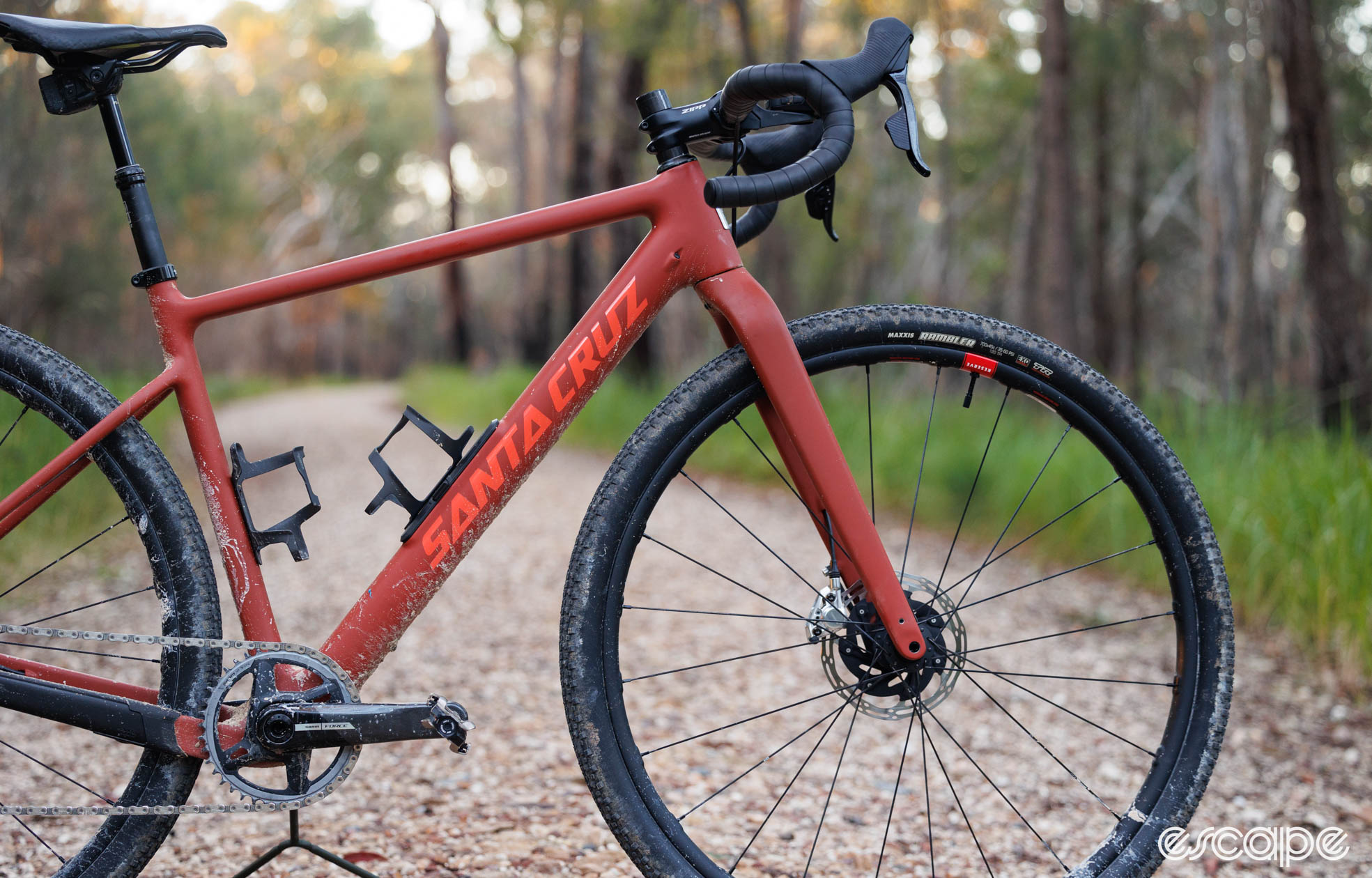
Backing my impressions, the brand has confirmed that what I was feeling was intentional. “One goal of that bike was certainly to soften it up, and it definitely rides softer than the old one,” said Josh Kissner, director of product. “The front end was a big focus.”
According to Kissner, the Stigmata Gen-4 introduced stiffness targets specific to each frame size, whereas previously the Gen-3 had two groupings of sizes for such stiffness targets. In a size large, the company claims that bottom bracket and rear stiffness has been reduced by approximately 10%. There’s a 12% reduction in lateral head tube stiffness. And the fore-aft compliance of the Stigmata Gen-4 fork is improved, too.
Adding to this, the wide tyre clearance and completely normal component fitments afford open choice for adding further comfort to the already good baseline. There’s nothing stopping you from adding bigger tyres, a more compliant handlebar, a suspension stem, or a flexible seatpost. And depending on your preference, it may already have a suspension fork up front.
It’s worth noting that the reduction in stiffness hasn’t introduced any weird handling quirks or a desire for more snap under power. The Stigmata is still plenty giddy if you get stampy, and while there are stiffer bikes out there, you won’t convince me that such stiffness offers any measurable benefit off-road.
Handling-wise, the Stigmata in the tested medium size feels wonderfully well-balanced and, like the BMC URS before it, seems to excel as the terrain gets rougher and steeper. Exactly like what modern mountain bikes achieve, the longer front-centre places you more centrally between the wheels and allows you to more confidently weight the front wheel for traction in turns.
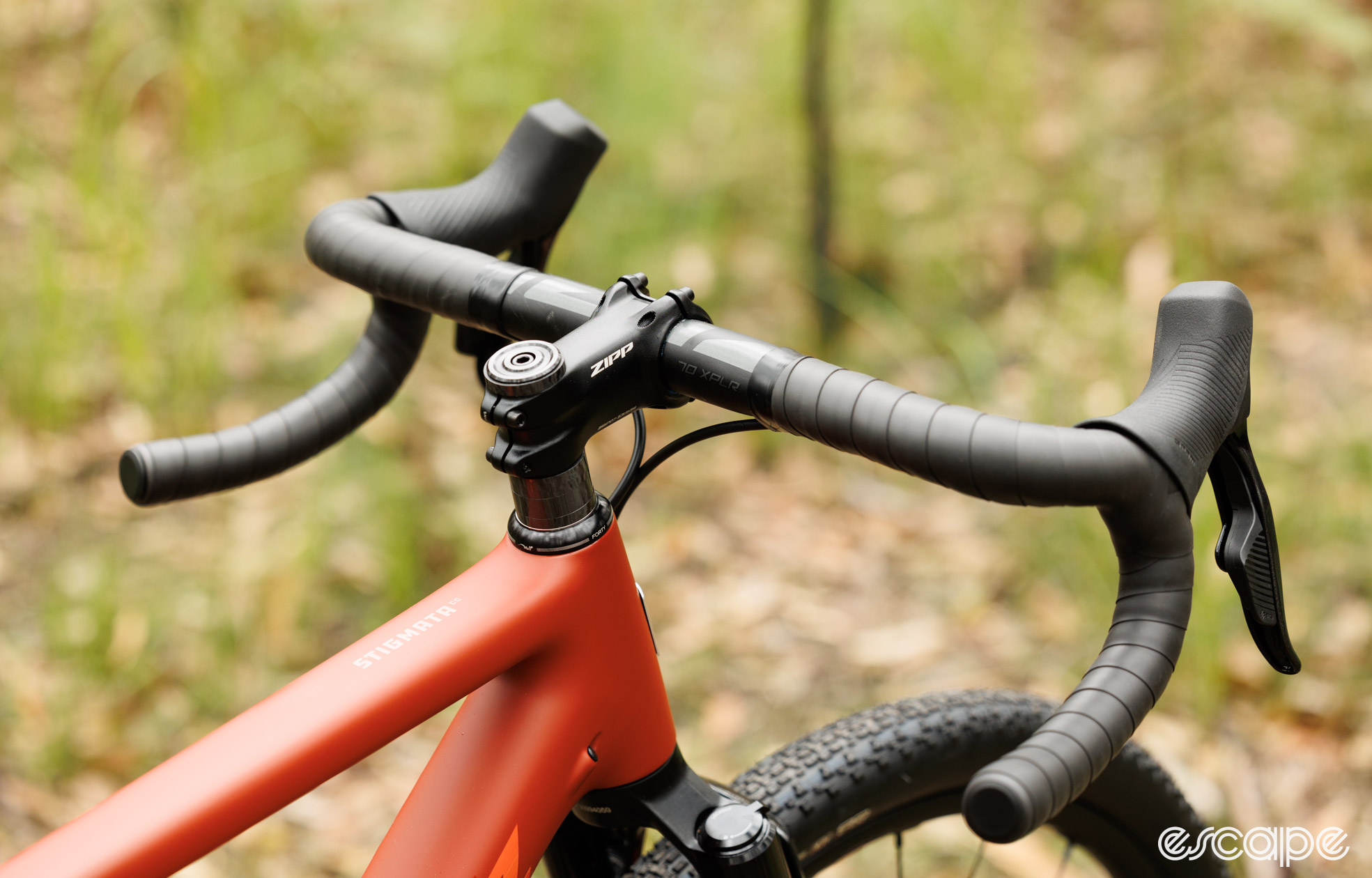
Also like modern mountain bike geometry, Santa Cruz keeps a consistent head angle and 87 mm trail figure across the full size range. It’s a much larger conversation whether this is a good thing or not, but with such a long front-centre on offer, Santa Cruz hasn’t needed to tailor the head angle or fork rake on smaller frame sizes to solve for toe overlap woes. However, the frame sizes do subtly vary the bottom bracket height to account for increased crank lengths, and that also plays a small role in helping to speed up the effective handling characteristics as the wheelbase lengthens.
Even with its suspension-corrected front-end height (aka, it’s taller), the Stigmata remained well-behaved and avoided wandering around like a lost puppy on point-to-the-sky inclines. Sometimes bikes with longer trail figures like the Stigmata can also feel a little too subdued and teeter on the side of being boring on smoother surfaces, but the use of a short stem helps to bring plenty of enthusiasm back to the steering.
Meanwhile, the relatively low bottom bracket height helps to remove any twitchy-handling characteristics. Overall the handling is stable and feels eager for the brakes to be let off, but remains plenty agile for tight trails. Again, Santa Cruz doesn’t deserve credit for inventing such well-balanced frame numbers, but it’s clear they’ve paid attention in class.
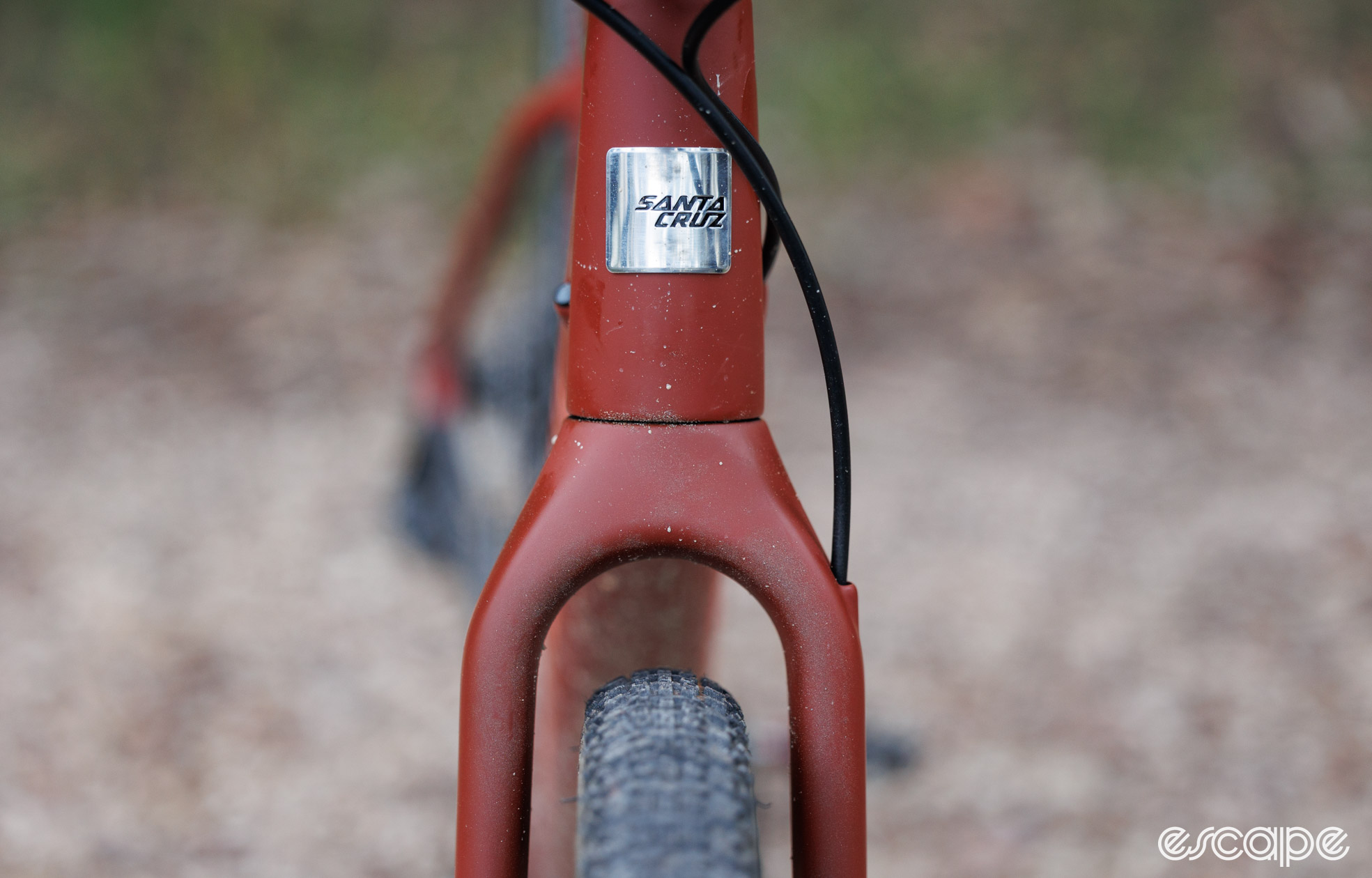
I’ve found the fit dimensions to be welcoming through offering a position that isn’t aggressive in reach or stack. If sizing yourself it’s important to look at that reach figure and remember it’s based on a 70 mm stem length. For example, on a more traditional dropbar bike I prefer a 380 mm reach with a 100 mm stem, while the medium Stigmata with its 405 mm reach and 70 mm stem felt like home (although if I was racing on it, I’d likely fit a 80 mm stem).
While it may be unfair to make this statement from afar as I can only talk to the size I’ve tested (medium), I do have concerns that the consistent 423 mm chainstay length featured across all sizes may result in a less-balanced feel at the larger end of the size scale. If you’re a taller rider susceptible to front-wheel lift on climbs, then keep this one in mind.

Rigid versus suspension
Coming into this review, I was a gravel suspension sceptic. In recent years I’ve ridden a handful of gravel bikes with suspension with mixed results. I was wholly underwhelmed by Niner’s now-discontinued MCR full suspension. I thought BMC’s URS LT with the custom Hi-Ride shock just didn’t do quite enough for the compromises it introduced. While my experience with the Lauf Sigla and the company’s own fork was far more positive, I still thought most riders would prefer the rigid fork option. And then there’s the whole host of suspension stems I’ve tried, appreciated, and yet not wholly clicked with.
Given all this, I’ll admit that my heart sank a little when I opened the box of this Santa Cruz Stigmata to see the most premium-priced (and one of the heavier build options) within. So much of the build made sense to me – heck, even the wireless RockShox XPLR AXS dropper post (75 mm travel) made sense to me – but that fork gave me pause. And it certainly wasn’t helping the matter that this premium gravel bike was 9.41 kg without pedals.

It’s now a few too many months later and I’ve tested the new Santa Cruz Stigmata with both the RockShox Rudy Ultimate XPLR suspension fork (previous version with the old damper) and with the Stigmata’s native rigid fork. And I’m not too ashamed to say I was wrong about gravel suspension in its latest incarnation. Well, at least when combined with the right style of bike and the right terrain. Let me explain.
The Stigmata slots into the category of being a more comfortable-feeling bike with or without the suspension fork, but there’s no overcoming the fact that rigid bikes tend to feel stiffer through the handlebar than they do at the saddle. Here, the addition of the front suspension fork has the bike feeling well-muted and even better-balanced front to rear. And even though it’s just 40 mm of travel, the front suspension simply makes the bike more eager to go an extra few steps in how far and fast it can be pushed in rough terrain.
A previous injury means I often suffer from a sore hand (or wrist) after prolonged hammering on rough terrain, but the suspension fork offered an obvious advantage in preventing that fatigue from setting in. Meanwhile, and perhaps more telling, that suspension fork offered a not-insignificant speed advantage whenever the terrain went from buzzy to bumpy. One regular riding friend (who is often out the front on rough descents) was quick to point out how planted and in control I looked, and that I was constantly rolling away, too. More simply put, the suspension fork helps to keep the front wheel tracking the terrain in times where a rigid fork is likely to jar the hands and sap speed.
So is a fork like the RockShox Ultimate XPLR suspension the perfect addition to the Stigmata? Nope, at least not for everyone.

If you want a gravel bike to predominately ride off-road on, explore with, and use much like a cross-country mountain bike of the past, then yes, I’m quite convinced the Stigmata is better with a suspension fork up front. The speed and comfort benefits sure beat the weight trade-off. Meanwhile the Stigmata offers geometry that makes the most from the increased confidence such suspension brings. Heck, I had to remind myself more than once that I wasn’t on a mountain bike and perhaps to cool it a little.
However, if you want a gravel bike to jump between tarmac and dirt, the cheaper, lighter, zero-maintenance, and always-locked-out rigid fork is likely to be the favoured option. Sure, the XPLR suspension fork has a lockout, but I found the provided lever lacking in easy grip and placed a little too far away for me to want to use it regularly (but please bike industry, I’m not asking for the complexity of remote lockouts on gravel bikes).
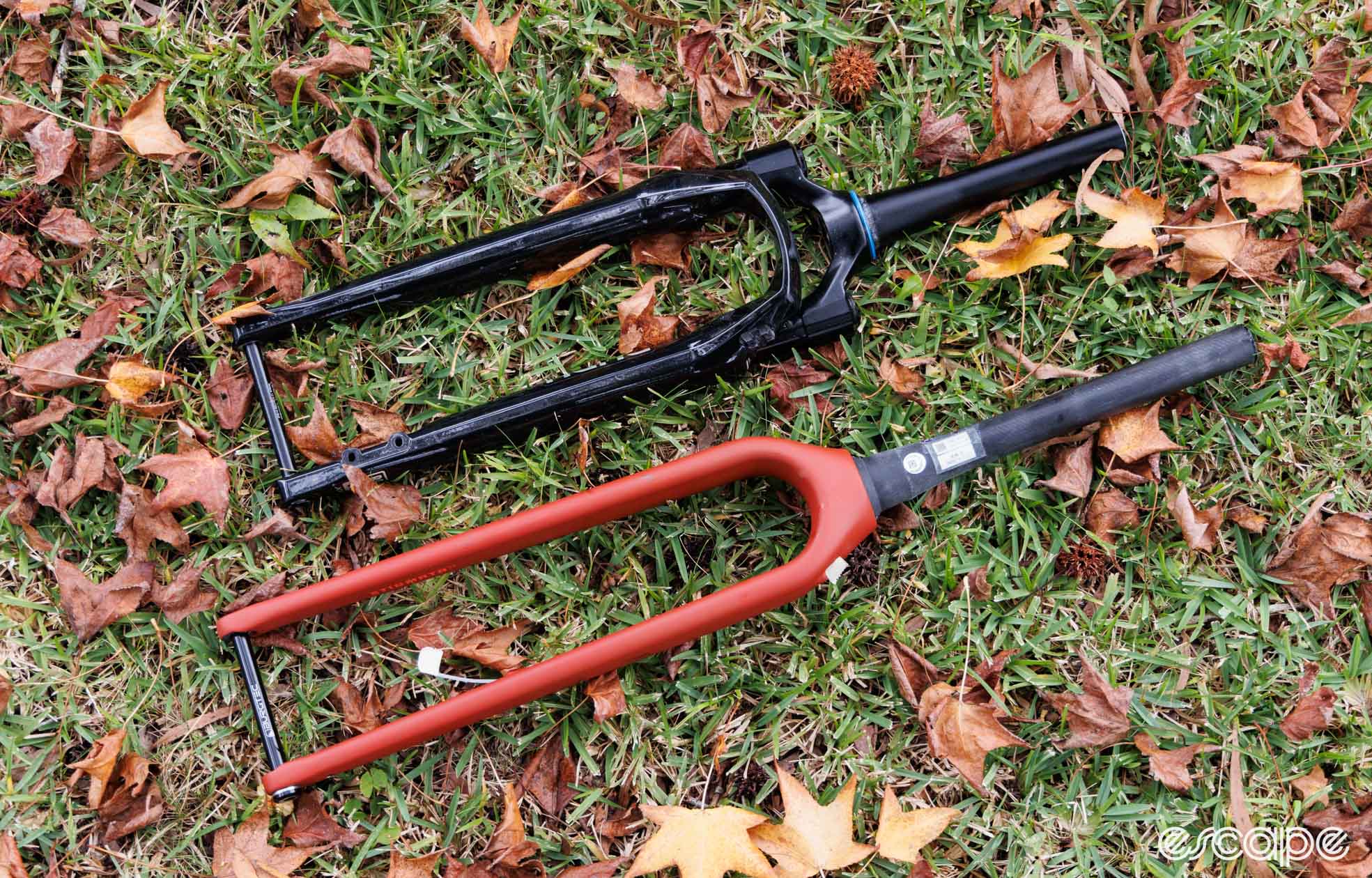
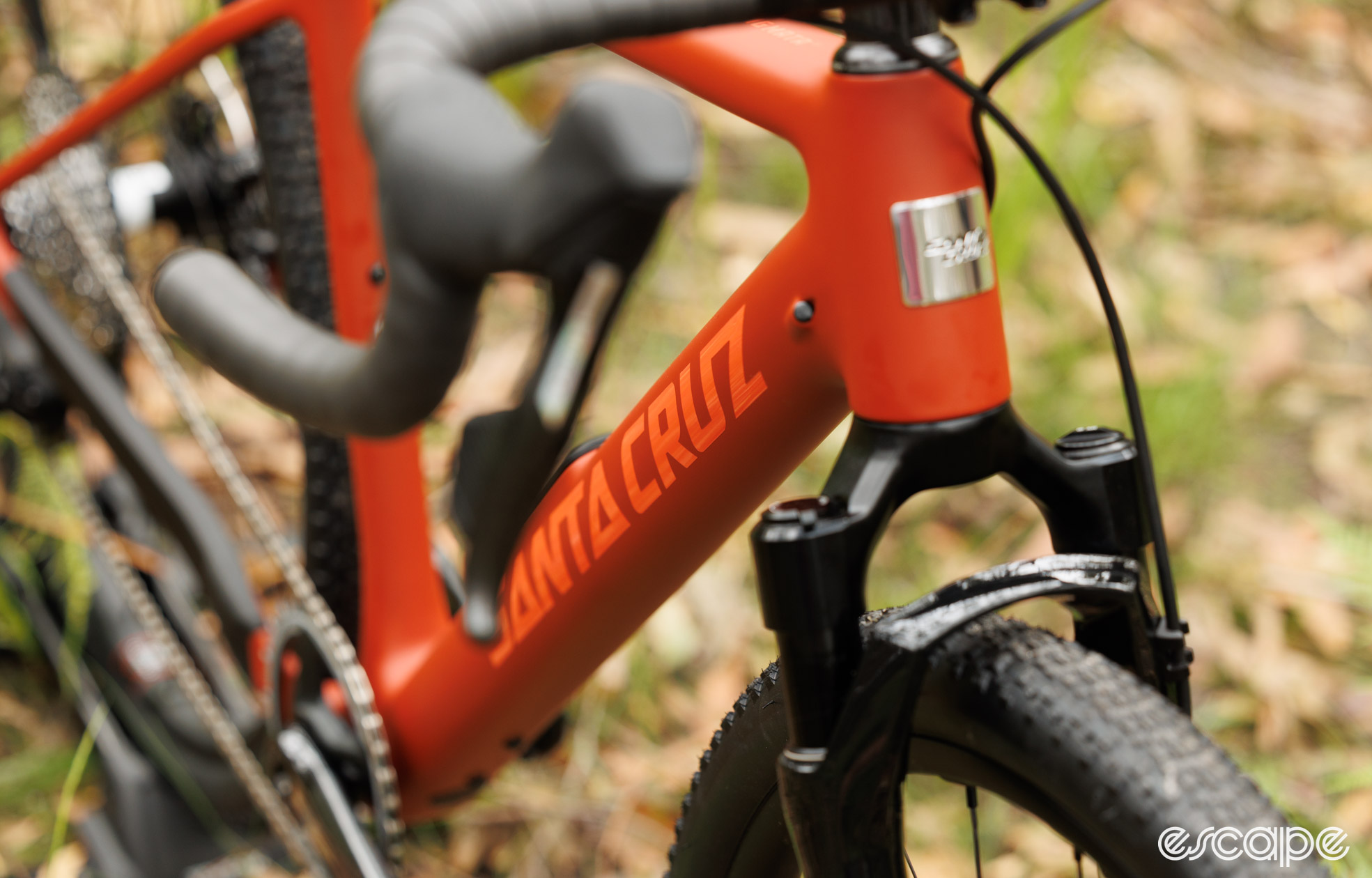
As for the weight difference, Santa Cruz’s rigid carbon fork sits at 438 g with the steerer cut to 190 mm (includes compression plug and axle). By contrast, the now-superceded Rudy Ultimate XPLR Suspension fork tipped my scales at 1,272 g (198 mm steerer, including axle). That’s a 834 g difference, with the weight increase coming with a bigger price tag, too.
In an ideal world, I’d be tempted to own both the rigid and suspension fork and occasionally swap out the rigid option for bigger adventures and/or events. However, stopping such a plan is that the rigid fork features internal cable routing through its leg, meaning a brake hose needs to be cut and the brake bled in order to make such a swap. Alternatively, one could equip the brake hose with a quick disconnect near to the handlebar, but that quickly becomes a complicated matter with needing a second caliper and/or hose.
The good and bad of the build kit
As impressed as I am with the Stigmata, there are a few elements to the given build kit that left me wanting more. Most obviously I found the 10-44T gearing range of the SRAM Force XPLR 1x to be poorly aligned with the sheer capability of the bike, and I often thought a SRAM AXS “Mullet” setup with a mountain bike rear derailleur and its wider-range 10-52T cassette would be a better match. Funnily enough, that’s exactly what Santa Cruz has now done with its latest high-end Stigmata build kits which make use of the UDH interface by equipping Transmission derailleurs. As a result, this complaint is largely a moot point unless you’ve got a line on older stock.
My other point of contention was with the RockShox Reverb AXS XPLR dropper seatpost. This wireless post has what I consider to be the best action of any dropper on the market, and the fact it works by pressing both AXS shift buttons simultaneously gives even more to love. Santa Cruz equips one with 75 mm of drop, and I found myself regularly using it given how capable the rest of the bike is.

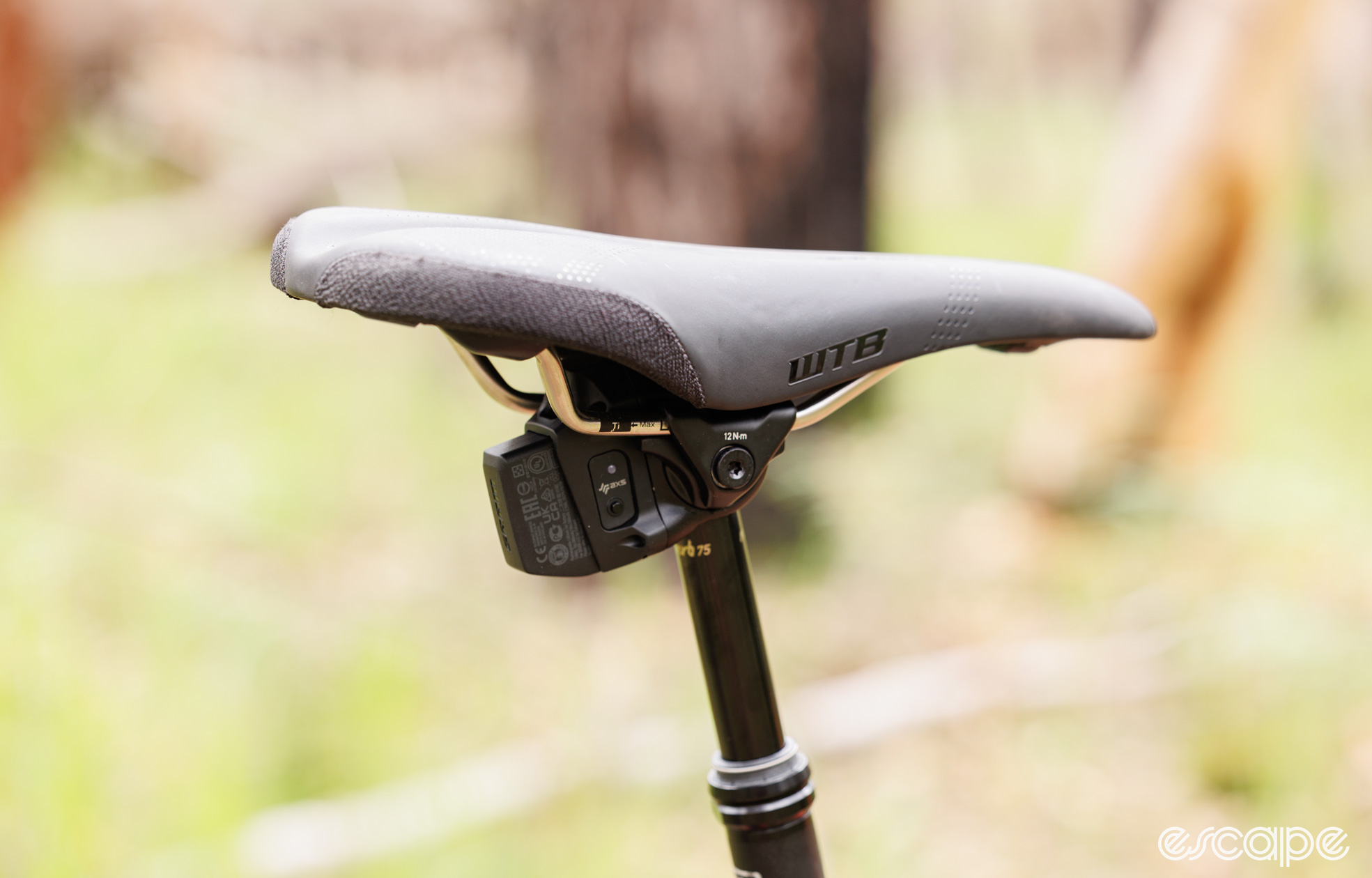
So what’s not to like in the dropper? Firstly, I’ve found the AXS battery in the dropper to not last as long as the same battery used on the derailleur. It going flat on a ride isn’t a deal breaker, but being something that I need to pay more regular attention to than the rest of the system is just another thing to think about. Adding to this, my seatpost quickly developed a large amount of slop in the bushing interface that could be felt while pedalling and I heard rattling while descending out of the saddle.
All of this is a tolerance issue that would certainly be handled by SRAM under warranty, but it does provide a reminder that droppers introduce another wear and service point into a bike, and with the cost of these AXS droppers being sky high, it’s not something you want to ignore and regret later. The same can certainly be said for the suspension fork up front, but as I’ve covered, the advantages there are not insignificant.
Beyond that, the rest of the bike is great. My higher-end version features Reserve’s 25|GR carbon rims on DT Swiss 350 hubs, a stellar wheelset that combines a compliant feel with an undeniably reliable hub. The wheels are wrapped in Maxxis Rambler tyres (45 mm width), a decent-rolling but well-rounded off-road tyre I rate incredibly highly and one I spend my own money on. Meanwhile Santa Cruz uses quality Cane Creek headsets, Burgtec thru-axles, and only brand-name touchpoints – there’s simply no skimping in the easily overlooked areas.
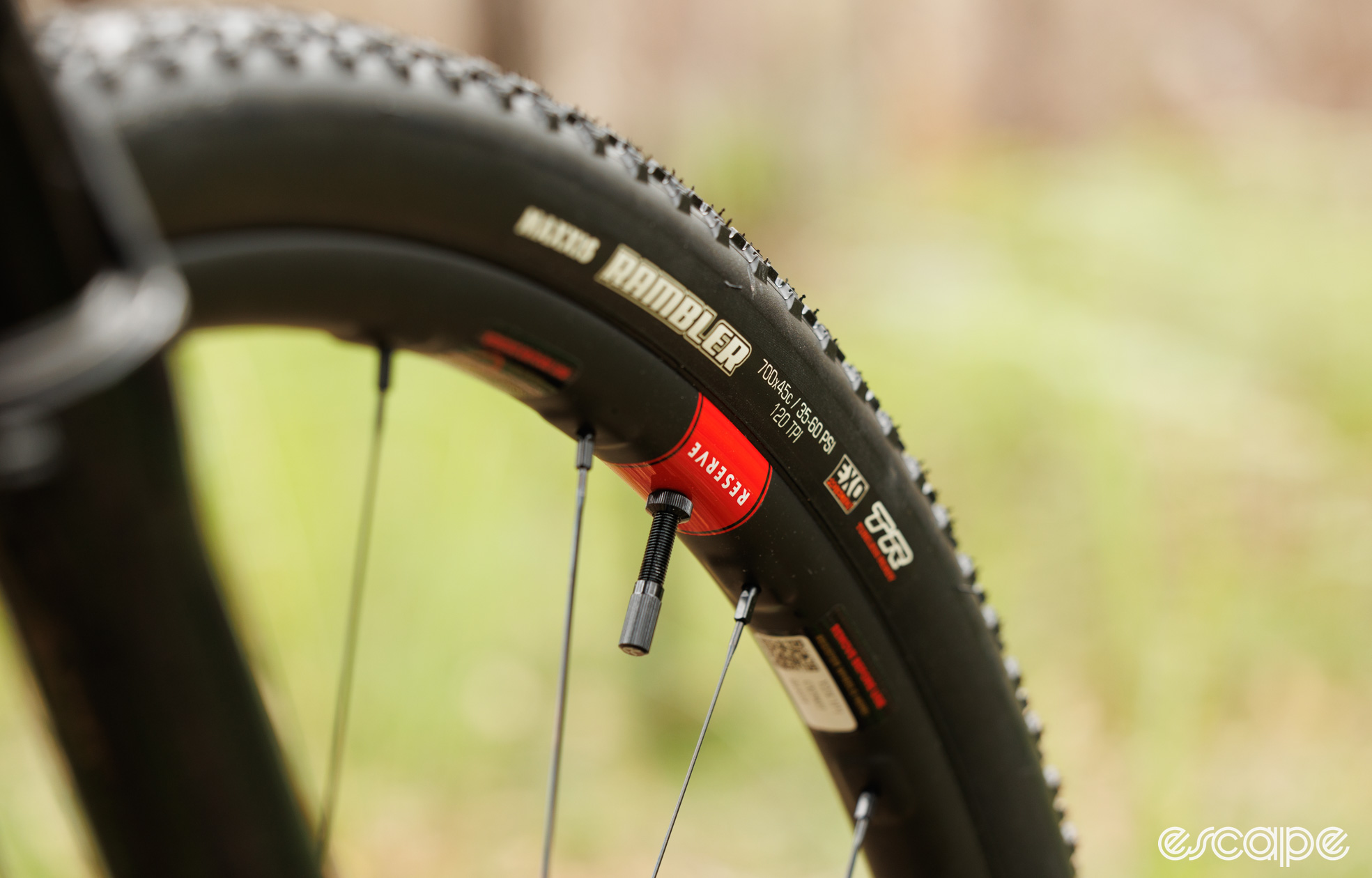
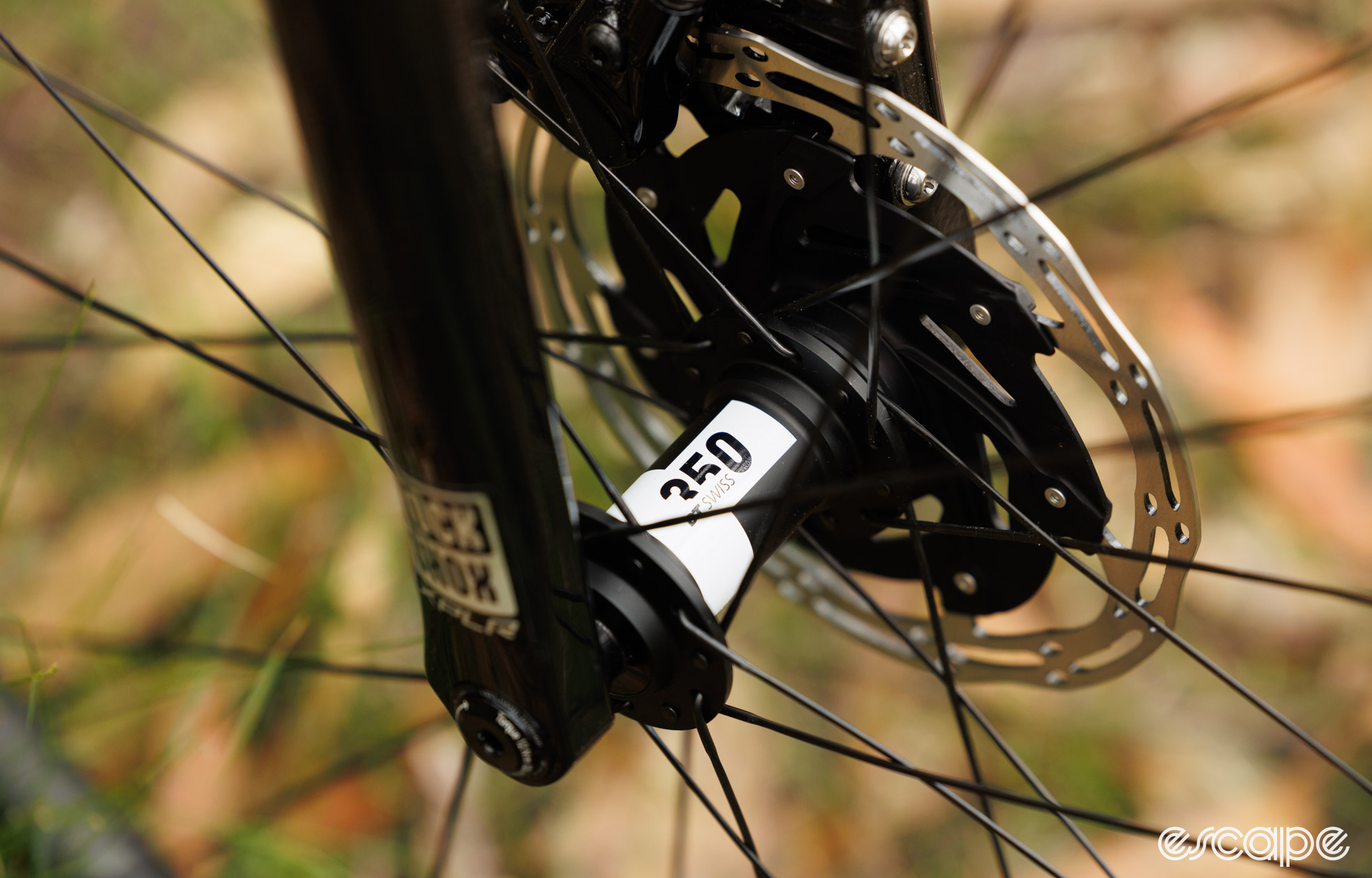
To return to that Glove Box, it may seem like a gimmick to some, but I’m sold on such a feature. The hatch itself is secure, decently sealed and wholly free from rattles. As mentioned, you’ll find two quality neoprene-style bags inside, one that fits a regular inner tube (or two TPU tubes if you’re feeling crafty), and the second roll-up and zippered pouch for a compact mix of a mini pump (or CO2), multi-tool, tubeless plugs, keys, cards, cash, etc. I found access to the contents to be just as easy as dealing with a saddlebag, all while being cleaner and out of harm’s way.
Dropper posts (especially RockShox AXS ones) introduce issues around using saddle bags, and so such a storage hatch is a welcome solution for how to carry and store such spares. Just note that while the hatch is weather-sealed, a minor amount of water ingress does appear in the event of a water crossing or bike wash – as with any other bag type, it’s a good idea to occasionally check that your contents remain functional.

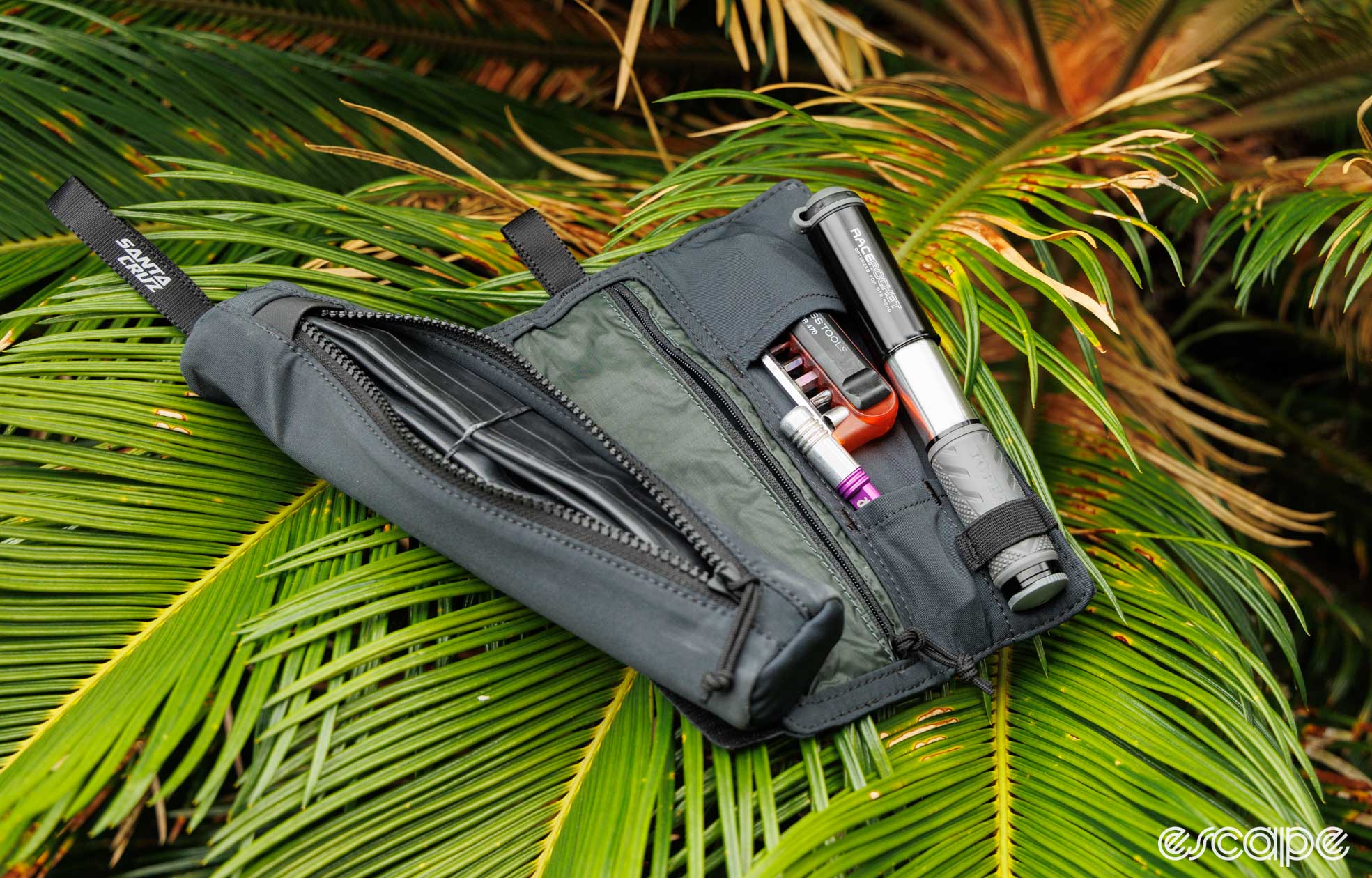
Wrap up
The Stigmata excels for the rider seeking a dropbar bike for largely off-road riding. The rougher the better. I personally love to use a gravel bike on terrain that can feel dull with a modern mountain bike, and the Stigmata is an ideal choice for that. Put another way, it’s a great premium option where under-biking is a common occurrence and fun is the priority.
For those more keen on Type-2 fun (aka, suffering), the Stigmata would be an incredibly effective choice for racing over a rough and technical course. However, for smoother and faster events or those wanting a bike that can serve double duty as a road and gravel bike with two sets of wheels, there are a myriad of more aggressive-fitting and -handling bikes that would be better suited. Put another way, if you plan to run road tyres, then look for a bike with more road-oriented geometry.
Santa Cruz is never the cheapest, lightest, or most feature-packed option, but that hasn’t stopped it from becoming one of the most desired brands in mountain biking. The new Stigmata is certainly guilty of those shortfalls, but it’s also one of the best off-road slanting gravel bikes I’ve ever ridden. Add in the easy ownership and lack of modern aesthetic-led features (looking at you headset cable routing), and it’s an easy bike to love.
Congrats, Santa Cruz. Not only is the new Stigmata no longer vanilla, but it’s so good that I’m now looking to buy one.
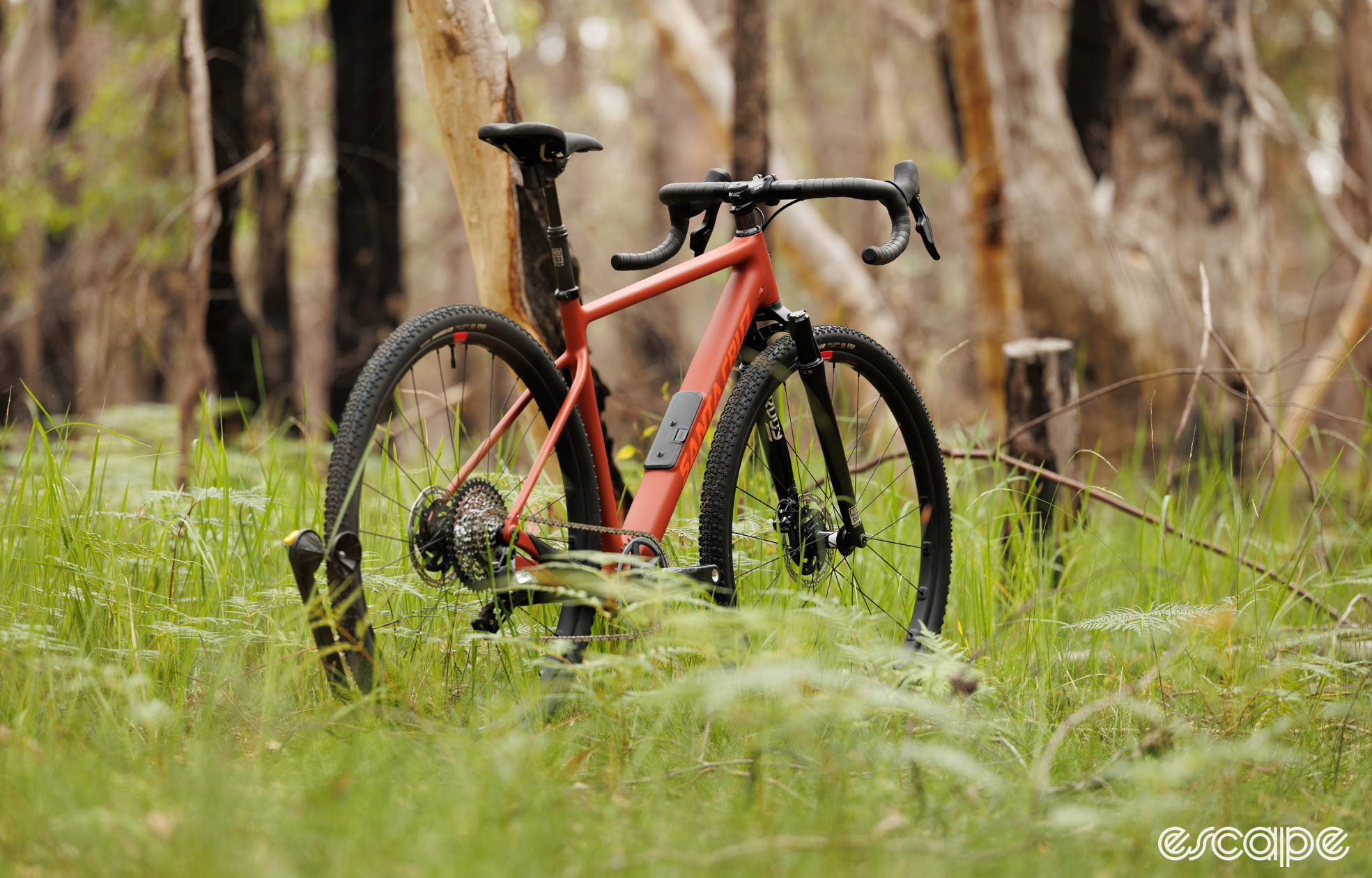

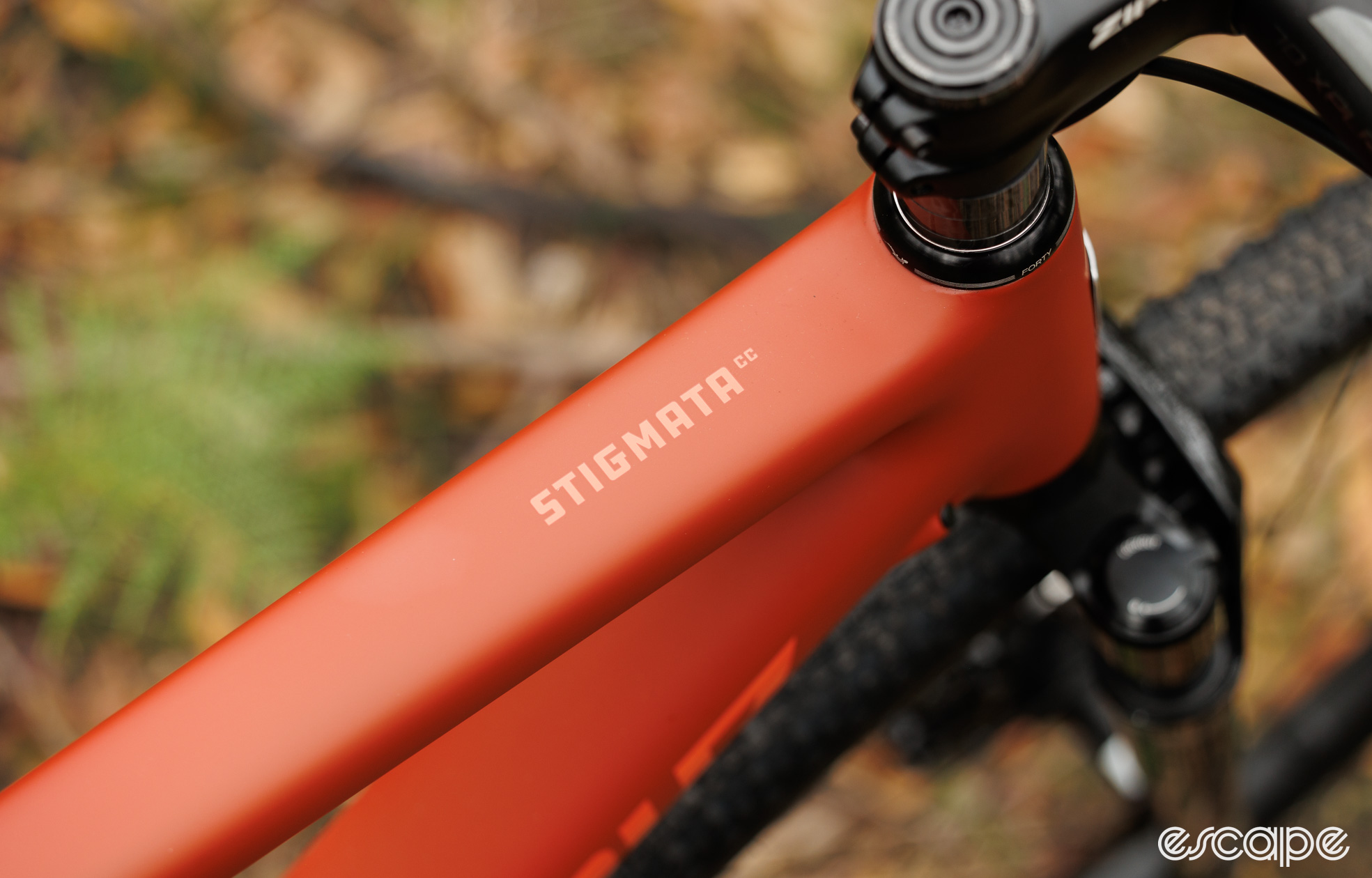
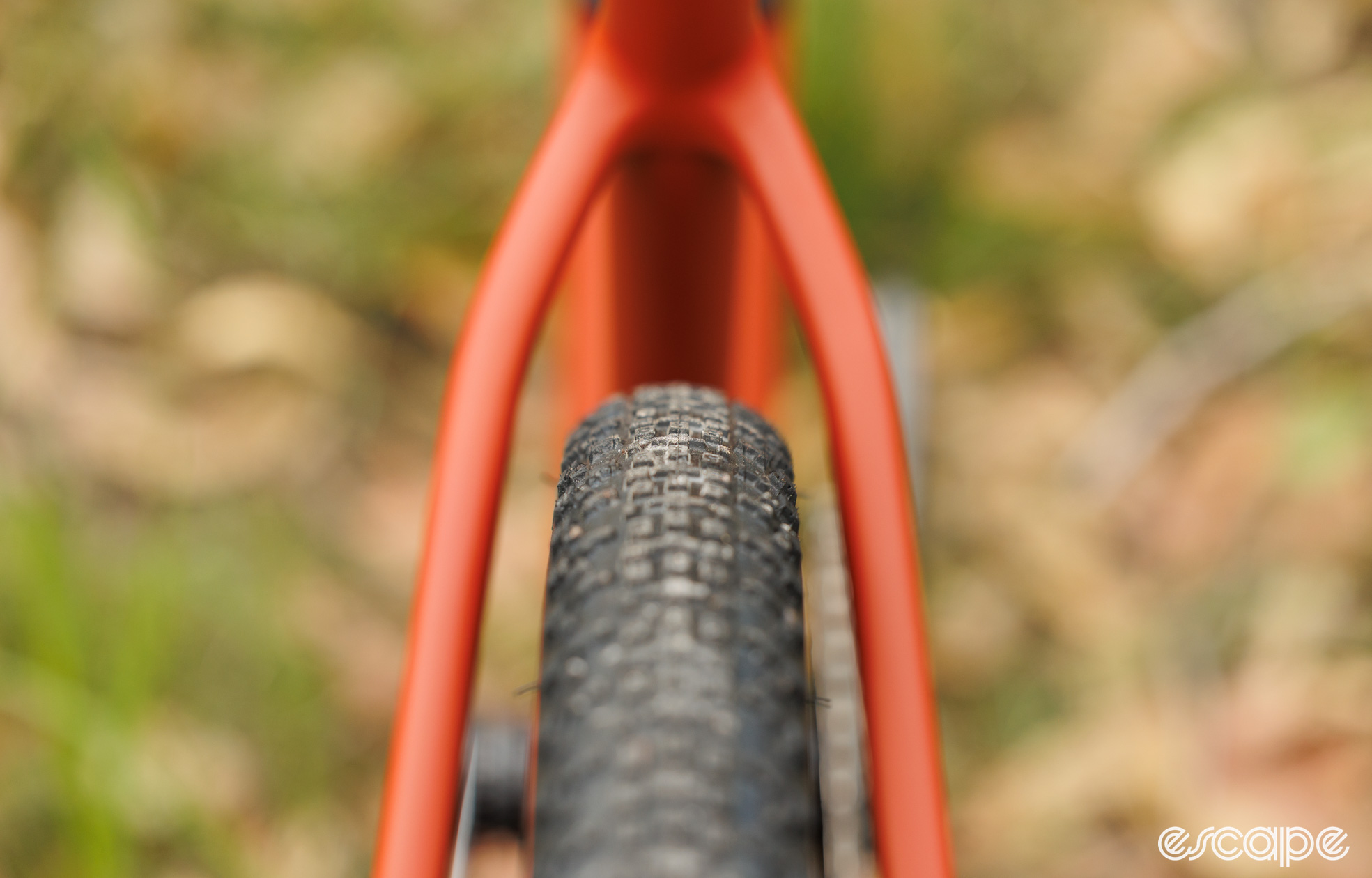
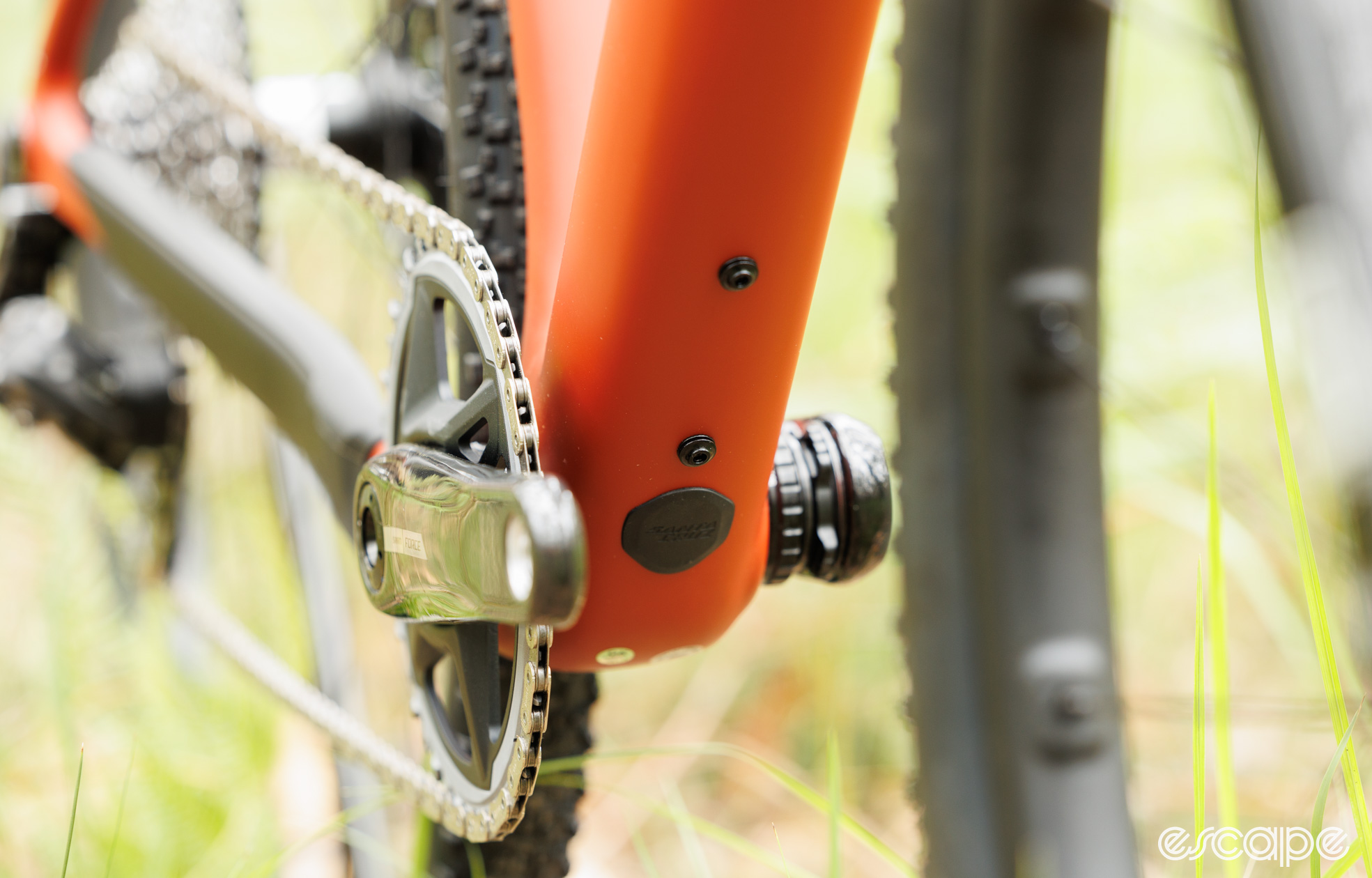
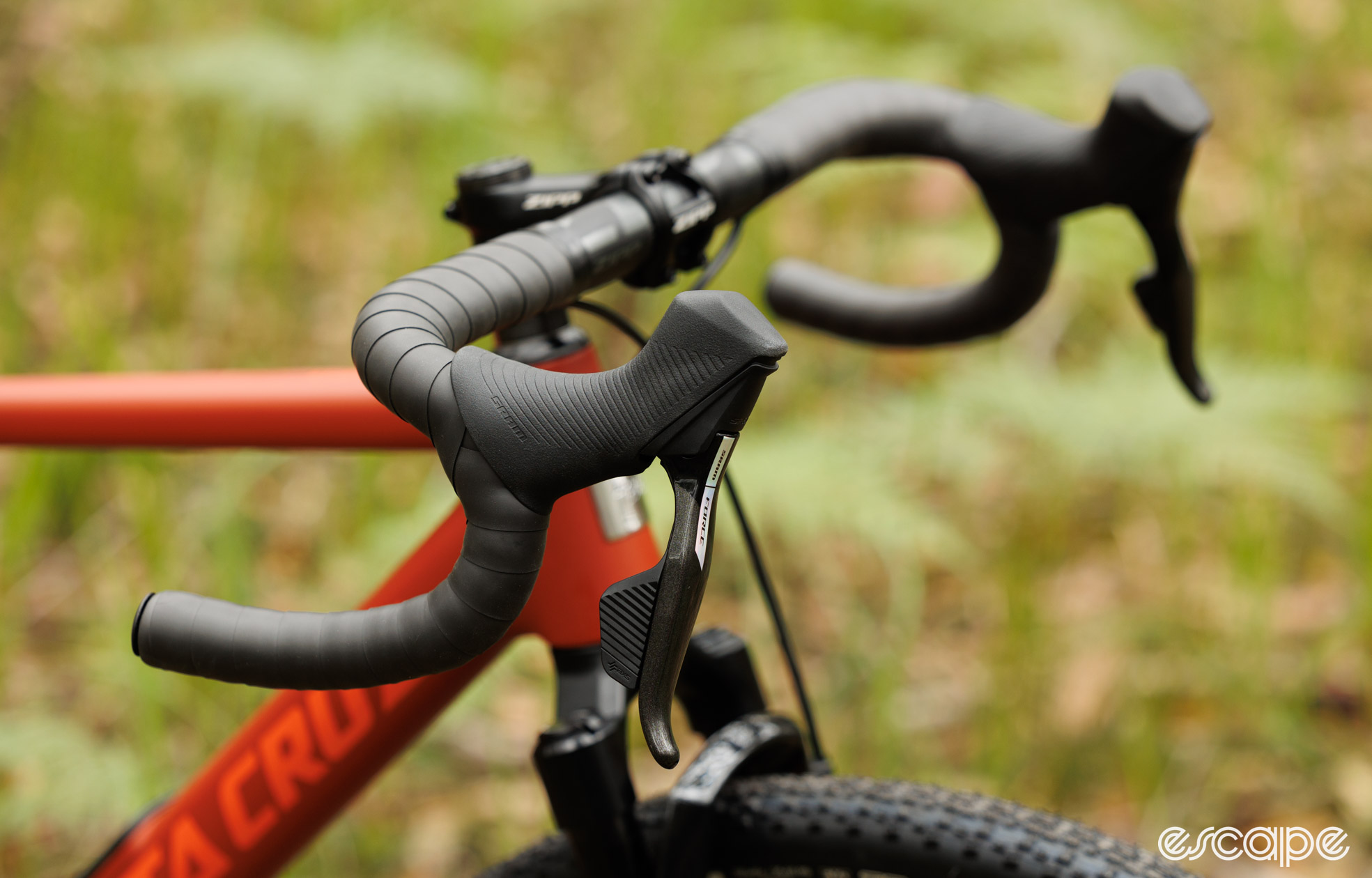
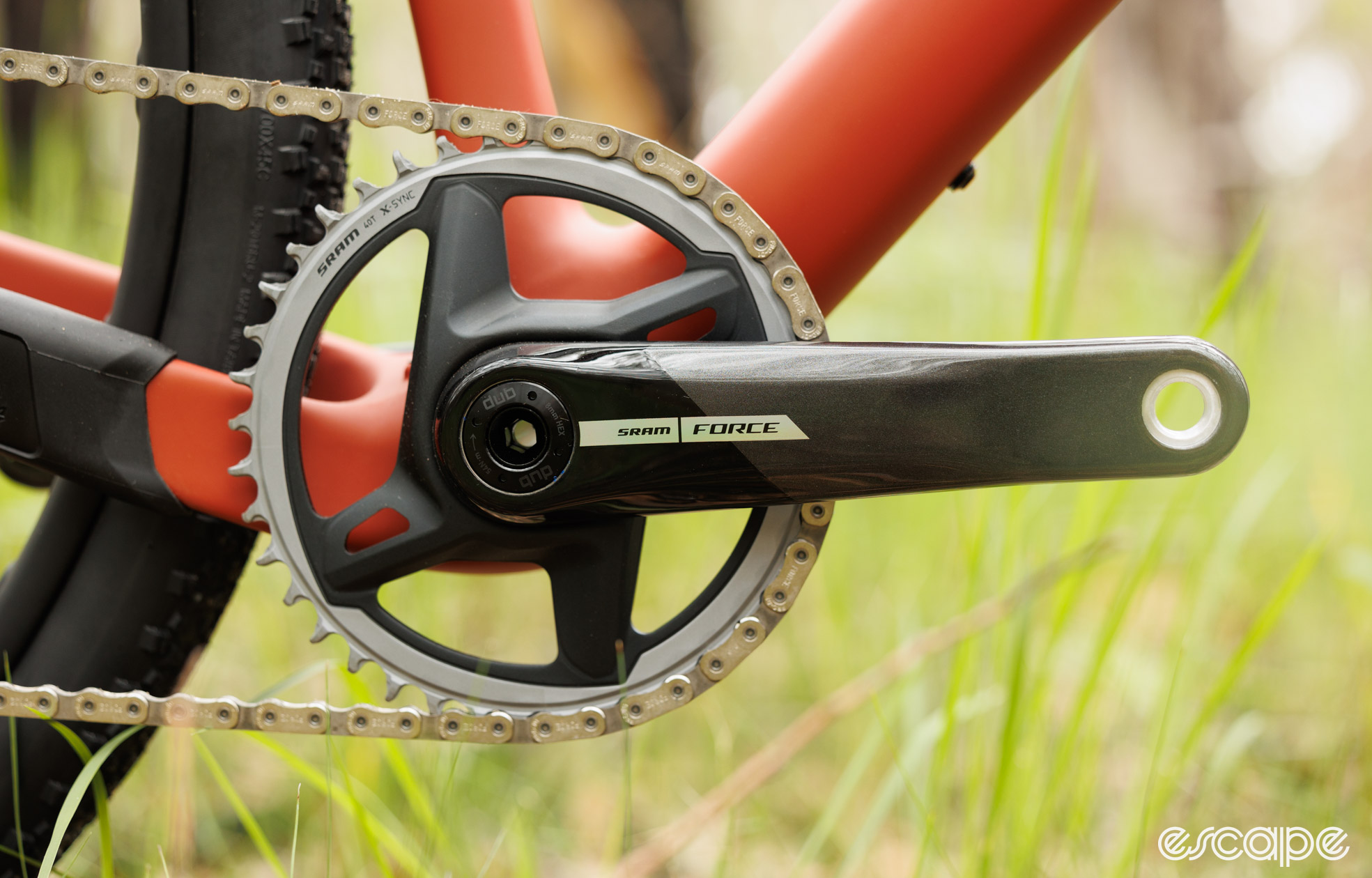
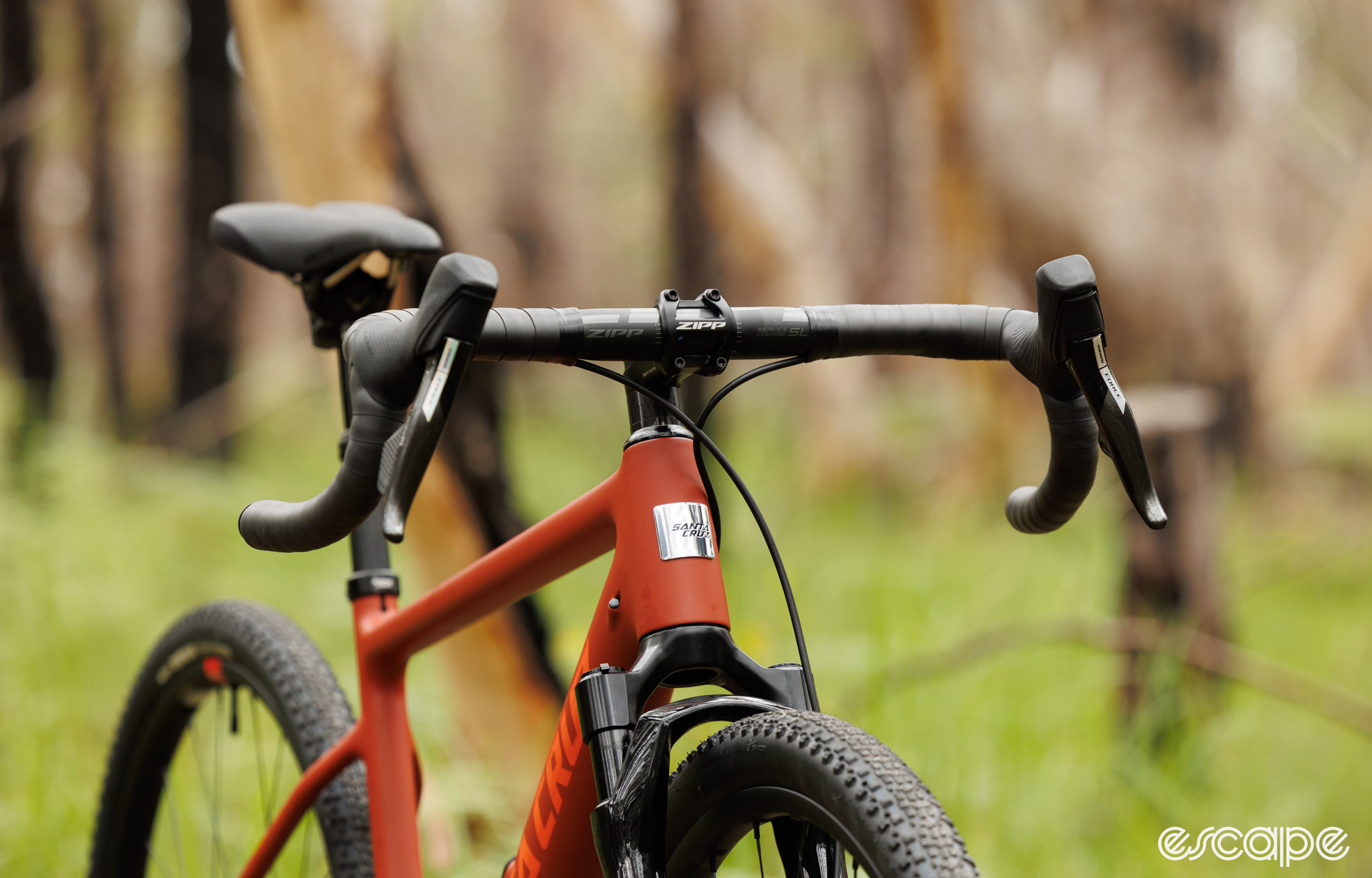

What did you think of this story?
